
Traverse With Taylor
| Helping You Experience Europe Easily
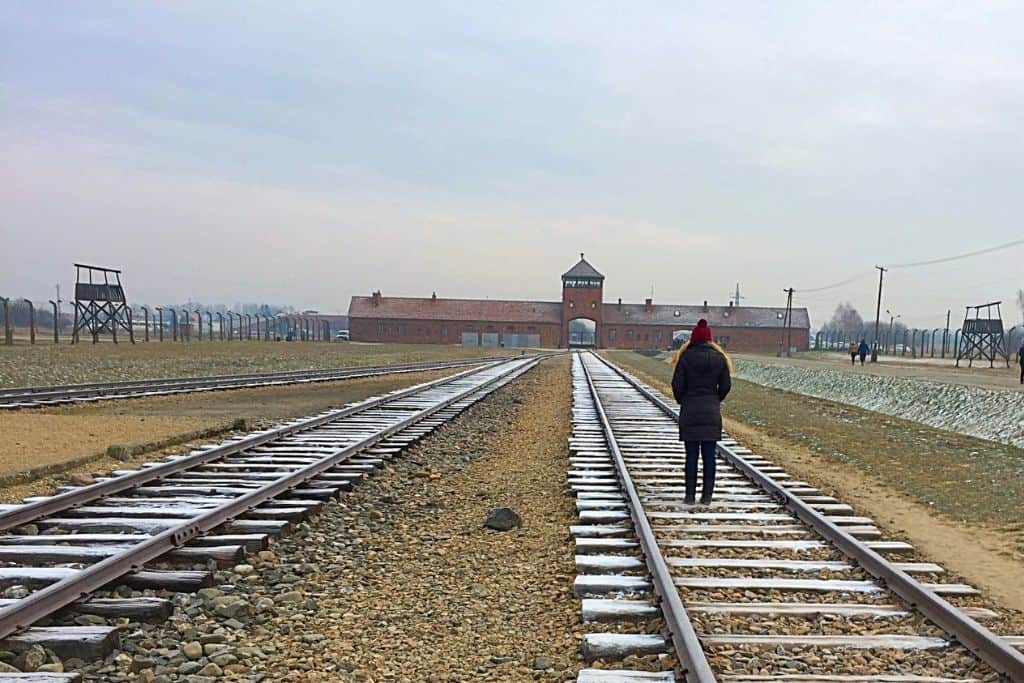

13 Best Concentration Camps & Holocaust Memorials to Visit in Europe
The Holocaust is a gruesome part of the world’s history, and there are many must-visit Holocaust sites across Europe that have been preserved with the goal of helping future generations learn from what occurred. The Holocaust was a mass genocide of Jews and other populations that lasted from 1933 to 1945. During the Holocaust, millions of Jews , Poles, political dissidents, and other marginalized groups were imprisoned and brutally murdered by the Nazi regime and its collaborators. While it is a difficult time in history to recall, it is imperative that we learn from the past, and visiting Holocaust sites is part of that. They offer us a chance to learn and confront ourselves with hard truths. I’ve spent more than a decade studying the Holocaust , traveling to visit sites like Auschwitz, Dachau, and the Anne Frank House multiple times. I can confidently say that visiting these historical sites will change the way you view the world. Below are some of the most well-preserved and educational Holocaust sites around Europe which are definitely worth your time to visit, including many of the best concentration camps to visit in Europe.

Best Concentration Camps to Visit In Europe
During the rise of the Nazi Third Reich , it is estimated that more than 40,000 concentration camps, death camps, labor camps, and transport camps were established. Many of these were smaller subcamps, and thus they disappeared once World War II came to an end. However, many larger camps were preserved for history and learning opportunities, and you can still visit them today. After visiting numerous concentration camps and other Holocaust sites, these are the best concentration camps to visit in Europe:

1. Auschwitz Birkenau Concentration Camp and Memorial (Poland)
Auschwitz Birkenau, located in Oświęcim, Poland , is one of the most-visited Holocaust sites in the world and is something you should not miss if you’re traveling to Krakow, Poland. It remains at the top of this list because seeing Auschwitz is an incredible learning experience. I’ve visited personally three times, and I learn something new each time I am there. The grounds of Auschwitz I and Auschwitz II-Birkenau are well-preserved, making it one of the best concentration camps to visit. Auschwitz, the largest Nazi Concentration Camp, was in operation from 1940-1945. It is widely known as the largest death or extermination camp , and, out of the 1.3 million prisoners who walked through its gates, only about 200,000 survived. During a visit, you’ll be able to tour both camp locations (Auschwitz I and Auschwitz II-Birkenau) and see numerous permanent museum exhibitions, barracks, gas chambers, crematoriums, and guardhouses. For everything you need to know about planning a visit to Auschwitz, read How to Best Visit Auschwitz. Visit Auschwitz From: Krakow, Poland For tickets and additional visiting information : Auschwitz Birkenau Museum and Memorial
Travel Tip: The easiest town to visit Auschwitz Birkenau from is Krakow, Poland . Since it’s located more than an hour outside the city, book a guided tour to travel easily to the camp site.
2. Dachau: The Best Concentration Camp to Visit in Germany
Dachau, located just outside Munich, Germany , was the first “model” concentration camp for all others. It is the best concentration to camp to visit in Germany, and it is also incredibly easy to reach. The Bavarian government keeps up with restoration projects around the camp complex, preserving the site as an important piece of German history so that others can remember and learn from it. Prisoners first entered Dachau in 1933. Originally created for political prisoners, Dachau was never officially classified as a death camp. Meaning, the showers, gas chambers, and crematorium you’ll see here were never used for mass-scale incineration. The grounds of Dachau are extensive , and there is so much more to learn than is depicted on the plaques around the camp enclosure. Because of this, I highly recommend you take a guided tour of Dachau . They are affordable and will add so much value and knowledge to your trip. Visit Dachau From: Munich, Germany For tickets and additional visiting information : Visit the Dachau State Museum Website .

3. Sachsenhausen Concentration Camp (Germany)
Another one of the best concentration camps to visit in Germany, Sachsenhausen, is located just outside of Berlin and still welcomes visitors today. The camp site has been divided into thirteen exhibitions, all situated in buildings and specific portions of the camp. Separate areas exist for information regarding Sachsenhausen’s SS staff and their duties, Jewish prisoners, medical experiments, and many others. You’ll also find information on a nearby satellite camp, Oranienburg. While you can reach Sachsenhausen via public transportation, it is about 45 minutes from Berlin. I recommend booking a tour from the city center in order to save time and guarantee yourself a guide in the camp. Visit Sachsenhausen From: Berlin, Germany For tickets and additional visiting information : Gedenkstätte und Museum Sachsenhausen
4. Majdanek Extermination Camp (Poland)
In Lublin, Poland, lie the remains of the Majdanek, now a concentration camp memorial. Majdanek is far less visited than the other larger camps like Dachau and Auschwitz, but it has made the list of must-visit Holocaust sites because of how much of the area has been preserved. It is definitely one of the best-preserved extermination camps , making it a must-visit Holocaust site in Europe. Most of the original buildings still stand, including long stretches of barbed wire dotted with guard houses. Rows of barracks stretch far into the distance, helping visitors understand the grotesque, unending feeling of being imprisoned here. In Majdanek, you can visit gas chambers, a bathhouse, many barracks, monuments, and a visitor’s center museum. In addition, the Mausoleum is an immense tribute that stands to commemorate the lives lost at Majdanek, beneath which lies ashes from those cremated in the camp. Majdanek looks eerily similar to the way it did when it was in operation, making it a concentration camp worth your time to visit. Visit Majdanek From: Lublin or Warsaw, Poland For tickets and additional visiting information : Majdanek Museum Website

5. Theresienstadt- Terezin (Czechia)
Terezin, known also as Theresienstadt , is a former transport concentration camp outside of Prague in the Czech Republic. The grounds of the concentration camp were largely set up inside the Terezin Fortress, a walled defense building laid out in the shape of a star. The Nazis used Terezin as a ghetto and a tool for their propaganda machine. Famously, this was the concentration camp that received visitors from the Red Cross. Beautification projects were done and a film crew was brought in…all to prove to the world that concentration camps and the Nazi regime weren’t all that bad . Even today, the film footage from Terezin is haunting. On a visit to Theresienstadt, you can walk through numerous original camp buildings. Places like showers, an execution yard, and bunks have been preserved and stand almost as they were then. Many significant works of art came out of Theresienstadt . In fact, the largest collection of children’s artwork from the Holocaust has been preserved from Terezin. Make sure you view the separate museum and the Magdeburg Barracks, where this artwork from Terezin inmates is still displayed. As far as notoriety goes, this camp is often overlooked, which is a shame. A visit here has so much unique history to share with visitors. Visit Terezin From: Prague, Czech Republic For tickets and additional visiting information : Terezin Memorial Website

Other Holocaust Sites to Visit in Europe
There are so many other Holocaust Sites to visit in Europe other than just the grounds of former concentration camp memorials. Visits to memorials, hiding places, or burial grounds offer just as much knowledge and insight into the Shoah from a different perspective.
6. Anne Frank House (The Netherlands)
Anne Frank is perhaps the most well-known voice from the Holocaust. Over a million people visit her house in central Amsterdam each year. During World War II, Anne Frank and her family went into hiding with four other people. They lived in the Secret Annex above her father’s warehouse for more than two years until they were betrayed- by whom, no one knows. The family was deported to various Nazi concentration camps, and Anne’s father, Otto Frank, was the only member of the Frank family who survived. After liberation, Otto Frank returned home to Amsterdam where a family friend, Miep Gies, gave him what had been left of Anne’s diary when the family was deported. Otto Frank eventually published Anne’s diary under the name The Diary of a Young Girl . Ultimately, he decided to clear out the Secret Annex and open it as a museum, hoping to encourage young people to fight against injustice. Without a doubt, this is one of the top must-visit Holocaust sites in the world. Walking through the Secret Annex is a surreal experience. I’ve visited many times, and, still, I can’t help but be in awe of the strength and courage that Anne and her family had. Make sure to get tickets early, as they release on the second Tuesday of each month and always sell out! Visit the Anne Frank Huis From: Amsterdam, the Netherlands For tickets and additional visiting information : Anne Frank House
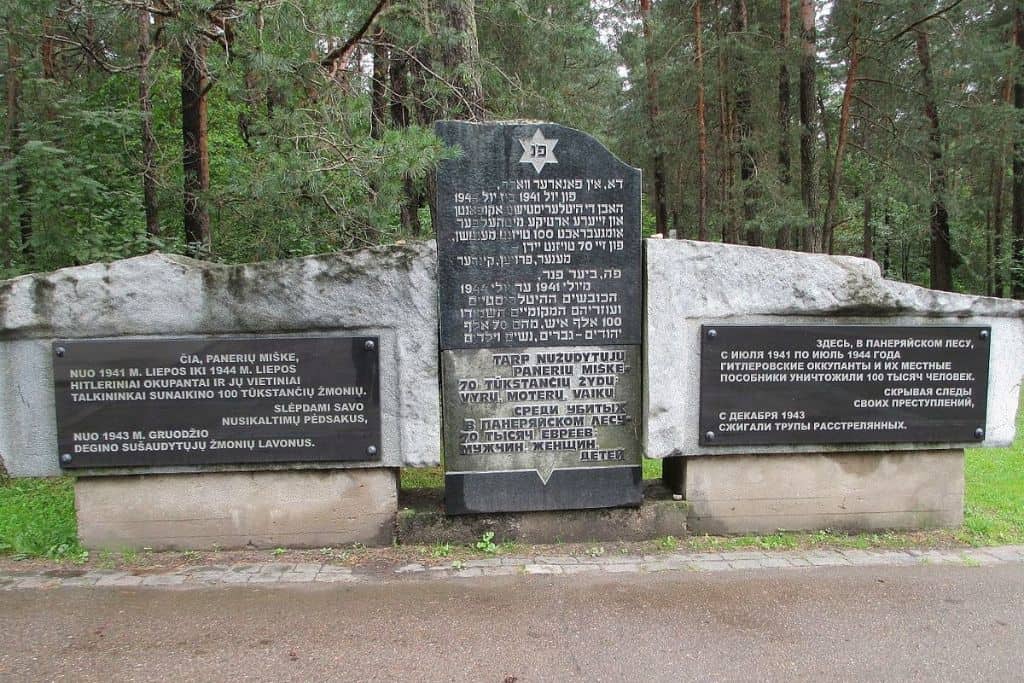
7. Ponar Forest (Lithuania)
Although a lesser-known Holocaust site, Ponary (also known as Ponar or the Paneriai Memorial Park) is incredibly important and moving and well worth visiting. Until recently, Ponar was just a forest outside of Vilnius, Lithuania. Over the past several years, researchers have dug deeper into the history surrounding the forest and have unearthed (literally) artifacts and remnants of what happened there. The Ponar Forest is a mass execution grave site. Here, an estimated 100,000 Jews and other prisoners were lined up on the edge of a ravine in the forest and brutally murdered, shot to death. However, it was recently discovered that some prisoners in Ponar found a way to escape . A hand-dug tunnel was excavated in Ponar in 2016. This tunnel began in the holding pit of Ponar and allowed 12 of the Jewish leichencommando unit to escape into the forest. A visit to Vilnius (Vilna) would not be complete without paying your respects to those murdered in Ponar Forest. Visit Ponary From: Vilna, Lithuania For tickets and additional visiting information : There is no official museum, but take a guided tour of the Paneriai Memorial Park and Memorials as well as other Lithuanian sites.
8. Schindler’s Enamelware Factory (Poland)
Oskar Schindler is one of the most well-known rescuers from Holocaust history, thanks, in part, to the fame of the movie Schindler’s List . Schindler, a Nazi officer, ran a factory in Poland where he worked to save Jews from deportation and death by giving them legitimate jobs and working papers. You were lucky if your name was found on Schindler’s List. In all, Oskar Schindler saved the lives of about 1,200 Jews. He has been designated as Righteous Among the Nations , a title reserved for those who actively worked to save Jewish individuals during the Holocaust. In Krakow, the building where Schindler’s Enamelware Factory was housed still stands. It has since been converted into a museum that covers Polish resistance and the story of Oskar Schindler. This museum is a must-visit Holocaust site to tour if you are in Krakow, Poland. Visit Schindler’s Factory From: Krakow, Poland For tickets and additional visiting information : Museum of Krakow Website

9. Warsaw Ghetto (Poland)
The Warsaw Ghetto was the walled-in section of Warsaw, Poland, where Jews were forced to live during the Holocaust. Throughout World War II, about 375,000 Jews lived within the confines of the ghetto and were starved, shunned, and murdered. The conditions within the ghetto were notoriously difficult, and residents were not permitted to leave without special papers or directions. One of the most popular resistance efforts, the Warsaw Ghetto Uprising , occurred here, where a group of Jews led by Mordechai Anielewicz fought back against their oppressors. Today, not much of the Warsaw Ghetto and its walls remain . After the uprising, Nazis destroyed the ghetto. However, you can still walk the Warsaw Ghetto Trail . This trail takes visitors past monuments and locations throughout the city of Warsaw that are pivotal to the Jewish community’s history. As well, you can still see some fragments of the Warsaw Ghetto wall during this tour. Because the fragments of the ghetto can be difficult to locate, I recommend you take a tour of the Warsaw Ghetto which will guide you past the ghetto wall, surviving streets of the ghetto, the place where the bridge connecting the ghetto was, and the memorials. Visit the Warsaw Ghetto From: Warsaw, Poland For tickets and additional visiting information : Take a tour around the ghetto ruins
Must-Visit European Memorials to Victims of the Holocaust
All around the world, memorials commemorate and remember the lives of those who were victims of the Holocaust. In Europe, many of these memorials are popular. Visit a few European Holocaust Memorials and spend some time paying your respects.
10. Shoes on the Danube Promenade (Budapest, Hungary)
For some reason, the Shoes on the Danube Promenade is one of the most moving memorials I have visited. Located on the banks of the Danube River in Budapest, Hungary, these haunting shoes tell the story of those murdered by the Hungarian Arrow Cross Party. In Budapest, Jews were rounded up and made to stand along the waters of the river. They were told to take off their shoes and were shot, brutally, into the Danube, where their bodies were lost to the waters. These iron shoes are all different, representing the unique identity of each person . and rest on the banks right where this horrific event happened years ago. Visit the Shoes on the Danube Promenade From: Budapest, Hungary For tickets and additional visiting information : Budapest City Website

11. Berlin Holocaust Memorial (Germany)
The Berlin Holocaust Memorial, also known as The Memorial to the Murdered Jews of Europe, is Berlin’s tribute to the Jews murdered in the Holocaust. This is perhaps the most unique memorial to Holocaust victims in Europe, simply because of its artistic design. The Berlin Holocaust Memorial is made up of more than 2,500 concrete slabs that stand upright at different heights. Through the slabs run cobblestone pathways that allow visitors to weave their way through the site with no particular direction. What visitors will quickly notice is that there are no names, dates, or symbols on any of these markers. The artist who designed The Memorial to the Murdered Jews of Europe wanted visitors to understand the vast, nameless, unending feeling that Jews may have encountered during the Holocaust. What many don’t know is that there is a visitor’s center beneath the memorial. This museum tells the stories of those murdered and helps visitors remember that each person lost in the Holocaust was a unique person. Visit The Berlin Holocaust Memorial From: Berlin, Germany For tickets and additional visiting information : Berlin City Website
Best Holocaust Museums To Visit
Along with memorials and Holocaust sites, visiting Holocaust Museums is also worthwhile. While there are many must-visit Holocaust Museums throughout the world, I’ve listed the two foremost below. Both are enormously informative and have multiple exhibitions, projects, and educational initiatives happening all the time.
12. Yad Vashem (Israel)
Yad Vashem, which stands on the Mount of Remembrance in Jerusalem, is Israel’s tribute and memorial to the victims of the Holocaust. This museum aims to preserve survivor testimony and collect artifacts and stands firm in its belief that everyone remembers and learns from the Holocaust . Yad Vashem is open to visitors. Most who come to the site head to the Holocaust History Museum, the largest part of the museum. However, the Museum of Holocaust Art, rotating temporary exhibits, and synagogue are also open to the public. One of the things you don’t want to miss at Yad Vashem is the Garden of the Righteous Among the Nations. Non-Jewish Holocaust rescuers are honored here. You can search for the trees or inscriptions that honor people like Oskar Schindler and thousands of other rescuers during the Holocaust. Visit Yad Vashem From: Jerusalem, Israel For tickets and additional visiting information : Yad Vashem Website

13. United States Holocaust Memorial Museum (Washington, DC, United States)
The United States Holocaust Memorial Museum (USHMM) is widely known as the foremost Holocaust museum in the world, aside from Yad Vashem. Nestled in the museum district of Washington, D.C., this exhibition stands as both a museum and a memorial to those murdered during the Holocaust. The four-floor, winding, permanent exhibition draws visitors into a chronological timeline of the events and facts surrounding the Holocaust. Thousands of artifacts tell the stories of prisoners, and first-hand survivor accounts really add a unique touch to the museum overall. In addition, rotating temporary exhibitions and educational series offer insight into varying topics such as the idea of neighbors during the Holocaust and what part Americans played in the Holocaust. During a visit, you can even meet Holocaust survivors, as many volunteer at the “Survivor’s Desk” in the museum atrium. The USHMM is free to visit, but you do have to reserve tickets in advance. Tickets often sell out, so be sure to grab them well ahead of time here! Visit The United States Holocaust Memorial Museum From: Washington, D.C. For tickets and additional visiting information : USHMM Website
FAQ: Must-Visit Holocaust Sites in Europe
Here are answers to some of the most frequently asked questions I get in relation to Holocaust sites in Europe:
Which Concentration Camp is Best to Visit?
Auschwitz is the best concentration camp to visit in Europe and is the first concentration camp you should visit if you’re looking to learn about the Holocaust. The exhibition portions are incredibly informative, and there are so many different displays to view. Here, you’ll be able to learn a lot of background knowledge about the Holocaust in addition to learning about the Nazi death camp of Auschwitz. A visit to Auschwitz puts the Holocaust into perspective, and, just by sheer size, you’ll be stunned.
What is the best concentration camp to visit in Germany?
If you are only going to visit one concentration camp in Germany, visit Dachau. It is well-preserved, easy to get to, and is unique. It is a good entry point into learning about the Holocaust.
Why you should visit a concentration camp?
Visiting a concentration camp is a way to learn from the horrors of the Holocaust; there is nothing quite as impactful as hearing stories from history as you’re walking the grounds of a concentration camp. While visiting a concentration camp is undoubtedly difficult, it is also a sobering and moving experience that is worthwhile.
Tips For Visiting Concentration Camps in Europe
Visiting a Nazi concentration camp is difficult, and it can be somewhat scary. There are a lot of unknowns, and it is a strange experience. Below are a few tips to help you best prepare for a visit to a concentration camp.
Should You Take Children to Visit a Concentration Camp?
Most concentration camps recommend that visitors under the age of 12 not attend. However, you are the parent. I would caution bringing young children. As an educator and someone who has studied the Holocaust deeply, I can confidently say that it can be difficult for children, and even adolescents, to understand the complexities of the Holocaust. If you choose to bring your children to a concentration camp, preview what you’ll see ahead of time and educate yourself on what happened. Give your children context before you show up, and perhaps avoid certain areas of the camps that may be triggering, such as the crematorium.
Dress for the Weather
Most concentration camps are almost entirely exposed to the elements. The majority of your tour will take place outside, regardless of what area or camp you are visiting. Make sure to dress for the weather in Europe ! You don’t want to miss important information because you’re too cold or hot!

Be Aware of How Emotionally Taxing Holocaust Sites Can Be
When you visit a Holocaust site, nothing, and I mean NOTHING, is sugar-coated. You will view graphic images, you will read heartbreaking stories, and you will see things you can’t unsee. This can be incredibly devastating and emotionally taxing. Don’t be afraid to cut your visit short if you become overwhelmed, and make sure to have open time for conversation and reflection following your visit.
Take Guided Tours
Almost all concentration camp grounds are free to enter. However, in visiting many of them, I’ve found that going on guided tours is the best way to learn. With a guided tour, you have the benefit of having a personal guide dedicated just to your group. You get commentary others don’t, and you can ask questions. While signposts and other informational things around the camps are generally very helpful, I’ve found that you get much more information if you participate in guided tours.
Conclusion: Must-Visit Holocaust Sites in Europe
The history of World War II and the Holocaust cannot be forgotten. One of the best ways to study history and learn is by walking in the places where this history happened. Although visiting a Holocaust historical site is a difficult, emotional experience, it is important that we keep visiting them. There are hundreds of Holocaust sites around the world, but these are some of the top places to visit where you can learn a lot and still find preserved memories and tributes.

↳ Read Other Helpful Holocaust Travel Content Below!
✔ These are the Top Holocaust Sites to Visit Around the World! ✔ Traveling Around Europe? Don’t Miss these Holocaust Tours ✔ Full Guide to Visiting Auschwitz-Birkenau Concentration Camp or Dachau Concentration Camp ✔ Here are the Best Auschwitz Tours to Take From Krakow! ✔ Everything You Need to Know About Visiting the Anne Frank House ✔ Make sure you have the best travel items for a trip abroad!
Taylor Beal, owner and author of Traverse With Taylor, has been traveling in Europe for more than a decade and helps others explore Europe easily through amazing guides and itineraries. She has adventured through more than 20 countries, searching for the best experiences, must-try foods, and delicious beers! She spends a lot of time in Scotland and Amsterdam, two of her favorite places! Taylor is also a Holocaust educator focused on raising awareness around WWII historical sites.
Similar Posts

7 Best Canal Cruises in Amsterdam To Experience In 2024

One Day in Belfast Itinerary: The Best of Belfast in a Day

Epic Amsterdam Bucket List: 19 Best Things To Do

Easy Ways to Say Please and Thank You in Dutch

50+ Best Couple Travel Quotes For Instagram Captions

5 Best Isle of Skye Tours From Edinburgh to the Highlands

Famous Holocaust Sites You can Visit Around The World
In this guide, we provide you with information on some of the most well-known sites of the Holocaust which you can visit today including:
- Auschwitz 1,2 and 3
- Anne Frank’s House
The Holocaust Memorial Berlin
- Schindler’s Factory
Warsaw Ghetto
The Holocaust is one of the most unfathomable events in human history. Many say that it can never truly be appreciated or understood until you see some of these sites for yourself. It is also important to further educate yourself on the atrocious which were allowed to happen during this time, and what better way to visit the places where they took place.

Probably the most famous site is Auschwitz near Krakow, Poland . Auschwitz was a network of Nazi concentration camps and multiple extermination camps; this may come as a surprise as many believe Auschwitz to be a singular camp.
In reality, “Auschwitz” was split into Auschwitz I, which was the building mainly holding political prisoners, and Auschwitz-Birkenau, which was a combination of a concentration camp and an extermination camp which held predominantly Jews, as well as homosexuals and gypsies.
A visit to Auschwitz can put things into perceptive. The sheer scale of the camp will act as a reminder as to how real and how terrible the Holocaust was. The long train track upon arrival and the outline of the building can bring on shivers. You can go on guided tours of Auschwitz, which are both harrowing and informative.
If you do decide to go with an organised tour, you will have with you an expert guide or survivor, all the information and personal uncovered stories you need to further your understanding of the atrocities that took place there – along with transport between the different parts of the camp as they are actually relatively far away from each other.
Parts of Auschwitz, such as a number of the infamous gas chambers, were destroyed by the Nazis upon learning they had lost the war. Other parts remain intact, such as the dormitories known as barracks and the wooden shelves where people slept and thousands of prisoners were held in small spaces. Other features include the clock towers, the trains, train track and prison cells.
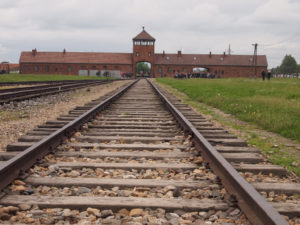
Auschwitz is notorious for the long train track that leads into the site:
At Auschwitz Majdanek, a separate site, much less has been destroyed and supposedly, it can be functioning and operating ‘within a day.’ Visitors can see gas chambers, barracks, crematoriums and a huge mountain of ashes – all located within suburban Kravow (the site is overlooking flats and residential homes).
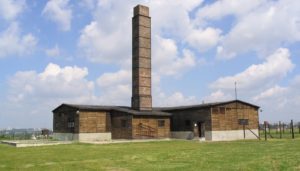
Auschwitz also features exhibitions which honour famous Jewish people as well as ones which display the actual inmate’s possessions, hair and millions of shoes – there is even a cabinet dedicated to prosthetic limbs taken from prisoners upon arrival in the camp.
Anne Frank’s House
In the heart of Amsterdam, Holland is Anne Frank’s house and her family lived in hiding during World War II to avoid persecution. Living with them there was a family called the van Pels and later, a man called Fritz Pfeffer joined the two families.
Anne Frank is famous for keeping a diary during her time in hiding, documenting her thoughts and feelings, which were at times surprisingly and endearingly optimistic.
Tragically, the group’s whereabouts were told to the Nazis and this betrayal resulted in their transfer to concentration camps. This sort of betrayal was very common in Nazi-occupied areas and unfortunately led to the death of so many Jews and other persecuted groups. Anne died in Belsen in 1945, just days after she found her sister Margo had died of disease, but her diary was discovered and published by her father, Otto, who survived the Holocaust.
Her house is now a museum which is hugely popular. Visitors are able to see the moving bookcase which they lived behind, walk through the cramped secret annex and see the conditions they lived in simply to survive. The museum has collected various objects and photographs which belonged to the Frank and van Pels family and the original of Anne Frank’s diary is on display to see.
The Holocaust Memorial, also known as the Memorial to the Murdered Jews, situated in Berlin is dedicated to commemorating the genocide of the Jewish people as directed by the Nazi Party.
It is presented with thousands of concrete slabs, over 6 feet high and positioned like dominos at different levels, to give perspective, turbulence and uncertainty. It is a place of contemplation, remembrance and also warning.
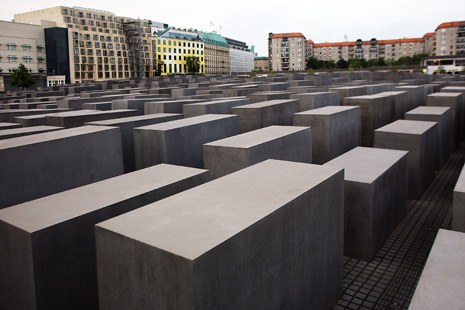
Schindler’s Factory
You can visit the site of Oskar Schindler’s factory where he employed Jews, offering them protection from the Nazi Party’s hunt. Schindler was a German Businessman living in Krakow, Poland.
This was not a hiding situation, the Nazis actually knew that he was employing Jews, but he had a good relationship with the SS and claimed he needed them because they cost less and their labour was “necessary for the German war effort”. As a result, thousands upon thousands of Jews which worked in his factory avoided being transported to extermination camps.
His former-factory has been turned into a museum open to the public. The museum is dedicated to educating people on the wartime experiences in Krakow under the five-year Nazi occupation during World War II.
In addition, parts of the museum are dedicated to Schindler and the workers he housed. The rest of the museum shows pre-war Krakow, the turn of the German invasion in 1939, Krakow under Nazi occupation. It also details everyday life of locals, family life as well as the resistance movement and it ends with the Soviet capture of the city.
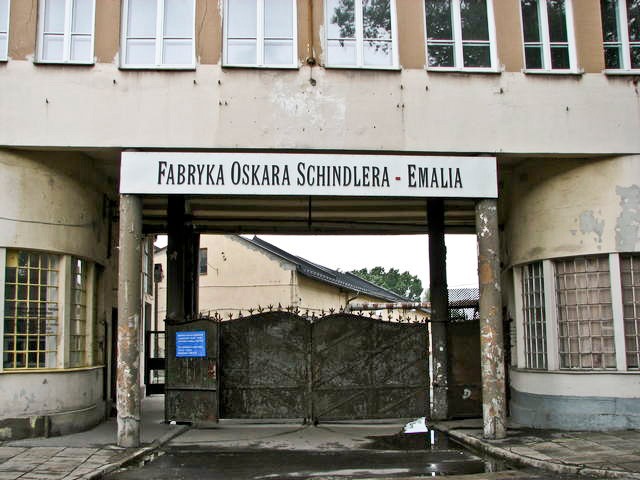
In the Holy Land of Jerusalem, you will find Yad Vashem which translates to ‘the hand of God.’ It is a huge and very impressive museum which is a living tribute and memorial to the victims of the Holocaust, who did not receive a burial.
Yad Vashem aims to keep the conversation going. The exhibits feature photographic accounts written and spoken by victims, remains from survivors, art installations and information panels.
There is a side dedicated to children of the Holocaust which is complete darkness – highlighting that as children, we do not see things clearly.
The site is modern and shows very impressive architecture and creativity. There is also a very historical aspect to the centre, which is highly educational.

Warsaw in Poland was home to the largest and deadliest Nazi-cultivated Ghettos in Europe. Ghettos were segregated areas where Jewish people were forced to live when under Nazi occupation. At its highest capacity, the Warsaw Ghetto housed an estimated 380,000 people, which works out to about 8 people per room.
Today, you can visit the site which is commemorated by “The Footbridge of Memory”, which was the bridge which linked the two smaller Ghettos together at the time.
Pictures of the victims are displayed on the buildings for you to see as you walk down the streets.
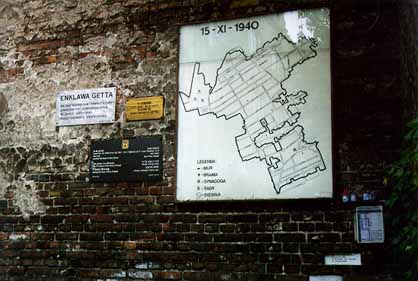
Previous Post A Guide to Female Nazi Guards
Next post holocaust films based on true stories, about holocaust matters.
Holocaust Matters is an interactive educational tool for anyone interested in the Holocaust including schools and those with a professional or personal research interest. It is run by the family of Holocaust survivor Dr Ernst Israel Bornstein to showcase excerpts of his memoir ‘The Long Night’ which tells of his miraculous survival from seven Nazi labour and death camps during World War II.
Users can explore and learn from the historical topics and universal themes within the book.
As well as being a historical source Ernst’s survival story has thrown up sensational new perspectives on the Holocaust and how history is remembered or forgotten to this day.
Without the words as his legacy his story would be lost.
Navigation Menu
- Explore & Learn
- Ernst Israel Bornstein
- Surviving Seven Camps
- Read The Book
Twitter Feed
© 2018 Holocaust Matters. Designed by Tudor Lodge Consultants
- Explore Universal Themes
- Camp hierarchy
- Holocaust remembrance
- Jewish life in camps
- Perpetrator
- Christianity
- Crematorium
- Death march
- Ernst Bornstein’s family
- Female Nazi Guards
- Forced labour
- Hidden Child
- Holocaust Selection Process
- Infamous Nazi Party Members
- Judenältester
- Meister Wilhelm Hermann
- Resettlement of Jews
- Righteous Gentiles
- Sabbath and festivals
- Why Did Hitler Not Like the Jews?
- Yellow star
- Learn about Holocaust Topics
- The Final Solution?
- Search by location
- Grünheide camp
Markstädt camp
Fünfteichen camp, gross rosen camp.
- Flossenbürg camp
- Leonberg camp
Mühldorf camp
- Video Archive
- Endorsements
- Watch The Long Night
- Speak to Noemie
Although Ernst was never an inmate at the notorious Auschwitz camp he relays his fear of being sent there. His parents and two younger sisters perished at Auschwitz. The camp’s deadly reputation was well-known amongst inmates of other camps. Nearly one million Jews were murdered at Auschwitz along with tens of thousands of Poles, Roma and people of other nationalities.
Find out more
Zawiercie in southern Poland, was Ernst Bornstein’s hometown. On the eve of the WWII there were 7,000 Jews in Zawiercie – about a quarter of its residents. They made their living primarily from trade, crafts, the clothing industry and the metal industry. The city had a traditional “cheder” (religious primary school), a Talmud Torah, and a school and kindergarten.
Grünheide forced labour camp
Ernst was dragged from his family home on 25th March 1941 and sent to Grünheide camp in modern-day Sieroniowice, Poland. Nothing is thought to remain of the camp apart from a hidden memorial.
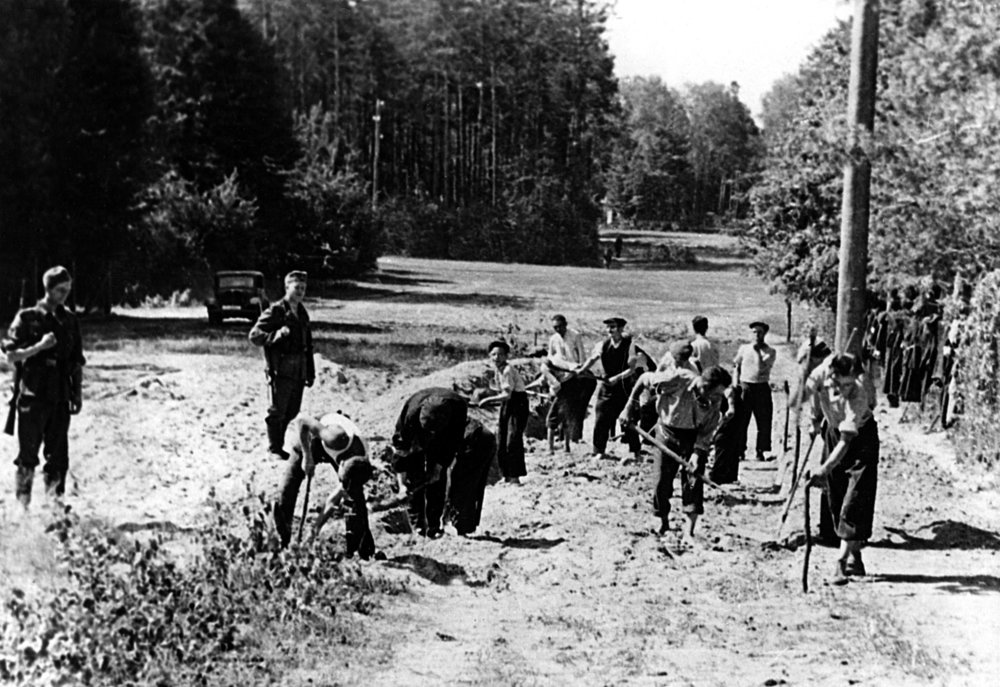
Markstädt was one of the largest Schmelt forced labor camps for Jews. Located 22 kilometers southeast of Wrocław (Breslau), it was established for Alfried Krupp’s artillery factory the “Bertha-Werk”.
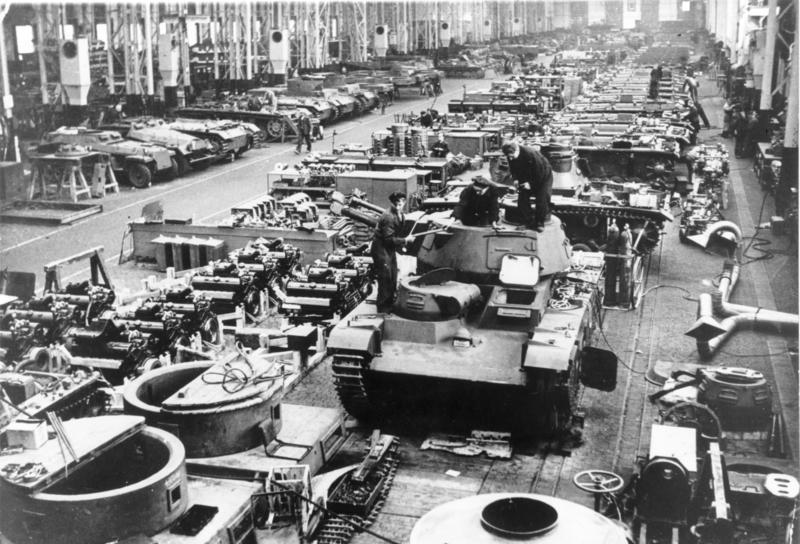
Fünfteichen was the largest subcamp in the Gross Rosen system. Most of the prisoners worked for the Krupp Factory, manufacturing 75mm and 150mm cannons as well as torpedo launchers. Prisoner beatings by SS men were a daily occurrence. Many prisoners could not stand the conditions prevailing in camp and committed suicide.
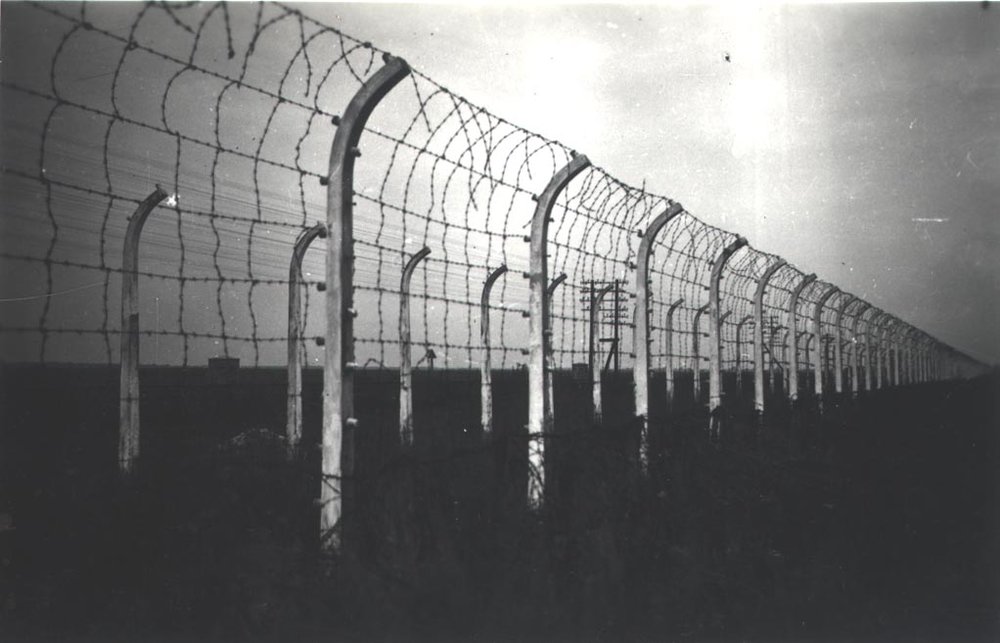
Gross Rosen concentration camp was located in modern-day Rogoznica in Poland. At its peak activity in 1944, the Gross Rosen complex had up to 100 subcamps located in eastern Germany, Czechoslovakia, and on the territory of occupied Poland. The population of all Gross Rosen camps at that time accounted for 11% of the total number of inmates incarcerated in the Nazi concentration camp system. There is now a museum on the site.
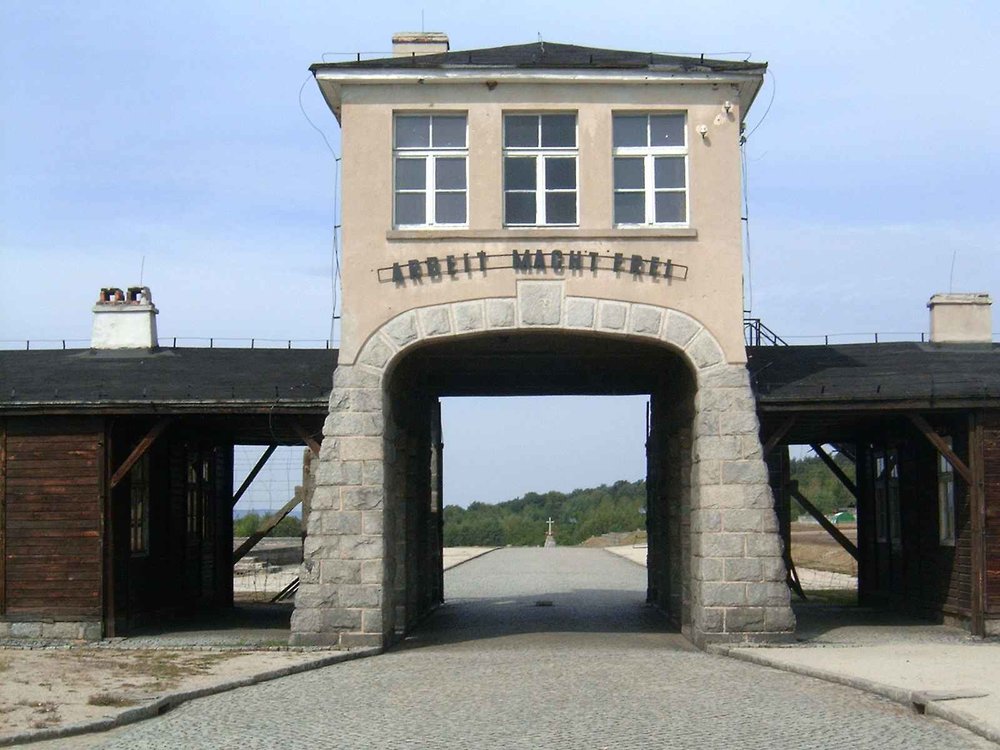
Flossenbürg Camp
Flossenbürg was a Nazi German concentration camp built in May 1938. Until its liberation in April 1945, more than 96,000 prisoners passed through the camp, around 30,000 of whom died there.
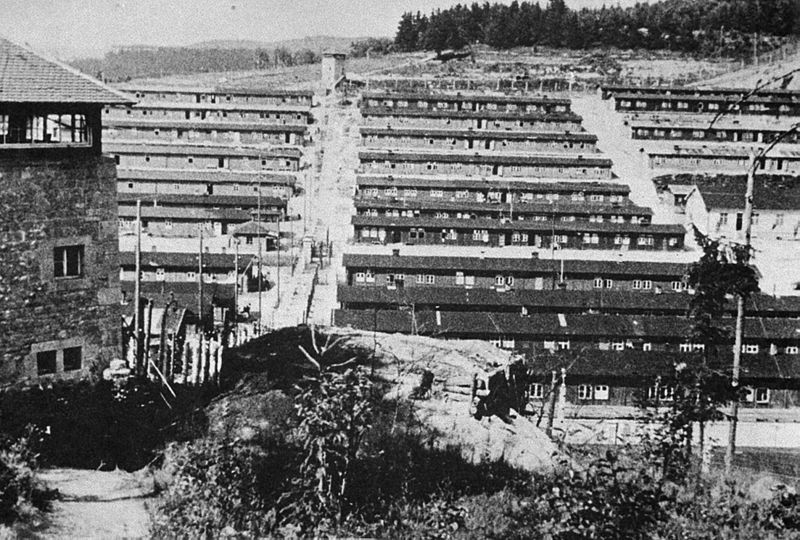
Leonberg Camp
From spring 1944 to April 1945 there was an outpost of the Natzweiler concentration camp run by the “SS” in Leonberg. Prisoners from 24 European countries, mainly from Poland, the USSR, France, Hungary, the Balkans and Germany were held captive in the shacks working almost exclusively for the Messerschmitt AG company making wings for the ME 262 jetfighter.
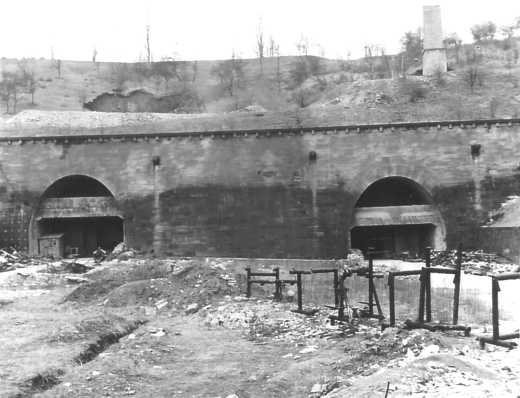
In mid-1944, the SS established the Mühldorf camp complex in Bavaria as a satellite system of the Dachau concentration camp to provide labour for an underground installation for the production of the Me-262 jet fighter.
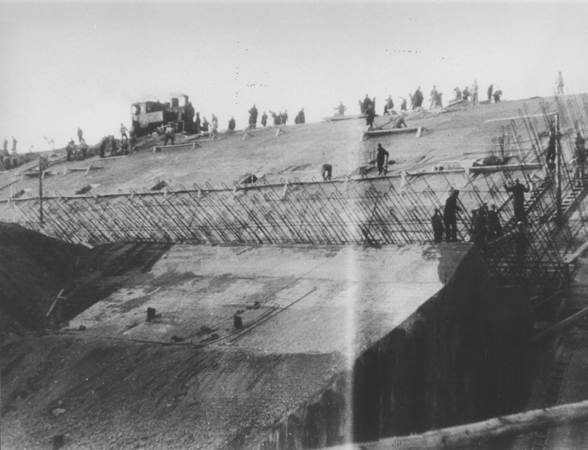

United States Holocaust Memorial Museum
What is antisemitism.
Hatred of Jews is on the rise. Learn how to recognize and combat antisemitism.
Visit the Museum
The Museum is free and open every day except Yom Kippur and Christmas Day. View the full schedule.
National Events
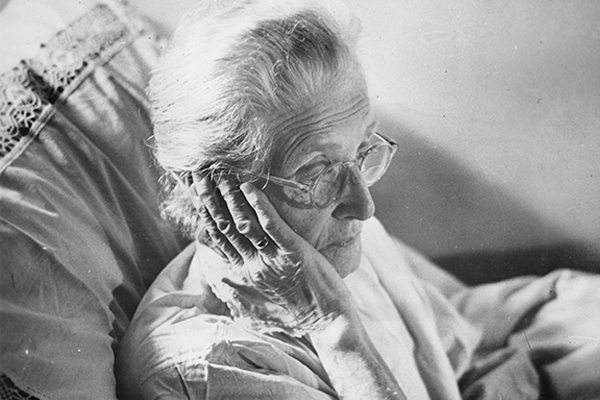
Older Jews and the Holocaust
2024 risa k. lambert chicago luncheon.
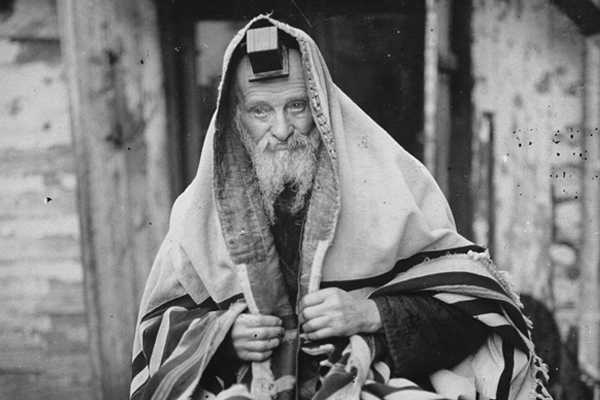
Unveiling the Unexplored: Orthodox Jews in Poland during the Holocaust
2024 northeast tribute dinner, search our collections.
The Museum's collections database contains more than 270,000 records, including:
Photos and albums —Images of life before, during, and after the Holocaust
Personal stories —Interviews, home movies, memoirs, and diaries
Films —Historical footage and contemporary films about the Holocaust
- Featured United States Holocaust Memorial Museum Condemns Misuse of Holocaust in Public Discourse
- Museum Calls on Colleges and Universities to Address Rising Antisemitism on Campuses April 22, 2024
- Museum and IranWire.com Launch Stories of Iranian Victims of Nazi Persecution, in Cooperation with Germany's Arolsen Archives March 26, 2024

15 Must Visit Holocaust Sites & Concentration Camps (2024)

Trying to find Must Visit Holocaust Sites?
I am here to help.
I live in Europe and have been visiting Holocaust sites for over 10 years to pay my respects and learn more.
It is so important to never forget the actions that happened in the Holocaust and to make sure it never happens again. This message is echoed constantly by those who survived.
This is why it is so important to visit Holocaust locations when in Europe.
However, there are hundreds of sites to visit- so which ones can you not miss?
Auschwitz, Anne Franks House and Omaha Beach are obvious choices but there other ones I seriously recommend adding to your itinerary.
So let’s take a look at the must-visit Holocaust memorial sites across Europe, the best tours of concentration camps and why you need to visit them.
The Best Tours To Book At A Glance
Ready to book your tour to the must-visit Holocaust sites in Europe? – It’s a good idea because they sell out quickly
These are a few of the best tours of Holocaust sites you should consider booking:

Majdanek Concentration Camp & Lublin Full-Day Private Tour
⭐⭐⭐⭐⭐ ( Over 41 Reviews )

Auschwitz Birkenau Tour With Private Transport
⭐ Rating : 5 out of 5 (18 Reviews )

Anne Frank & the Jewish History of Amsterdam
This is one of the best tours to do in Amsterdam!
5⭐ Rating(+90 Reviews )
The Best Concentration Camps To Visit
Concentration camps are the most popular way to learn about the Holocaust throughout Europe. I have visited many of them across Europe and they all offer a different perspective to your visit.
Not only do they have museums where you can see letters and belongings of those impacted, but the location of them helps visitors try and understand and learn about horrors that happened at them.
There are several camps you can visit across the continent that each have their own history and story.
Here is a list of the best concentration camps to visit in Europe:
1.Auschwitz I and Auschwitz II-Birkenau
2. dachau concentration camp memorial site, 3. bergen-belsen, 5. treblinka, top must-visit holocaust and memorial sites across europe.
- Auschwitz I and Auschwitz II-Birkenau
- Dachau Concentration Camp Memorial Site
- Bergen-Belsen
- Ponary, Lithuania
- Riga Ghetto and Latvian Holocaust Museum
- Schindler’s factory
- Empty Chairs Memorial
- Museum of Danish Resistance
- Anne Franks House
- Star Radio Shop, Copenhagen
- Shoes Of The Danube
- Omaha Beach

Auschwitz is the most well-known concentration camp around the globe and is one of the most visited Holocaust sites across Europe.
My visit here was not only incredibly emotional but helpful in understanding the lives of those impacted.
The former Concentration Camp is now a memorial and museum in honour of those who lost their lives here. A visit here includes seeing the remains of the concentration camp and the belongings of those who were forced to survive there.
I have read multiple Holocaust survivor books but seeing the site in person was a totally different experience.
If you are like me and are worried about how emotional this place can be try not to worry, the guides and staff here are amazing.
There are lots of options for how you visit Auschwitz but I would recommend paying for a guided tour of this camp. For around £30 PP/ 41 USD/ 35 Euros, you can buy a tour from Krakow to visit Auschwitz .
✔️ THIS IS THE TOUR I Recommend Of Auschwitz and the One I Booked For My Visit!
Many of the tours include transport, lunch and a local guide. This will make your visit to Auschwitz a lot more smoother and less stressful.
However, this is one of the most popular holocaust museums to visit so make sure you book in advance!
The tours come in lots of different languages and the educators have knowledge of the history of the camp, survivors’ stories and research being done.
However, if you want to do an unguided tour it is free but you have to reserve a slot which is in the Afternoon.
If you do not reserve a slot there is a high possibility you won’t be able to visit on the day you turn up.
The self-guided options used to be the best option if you are on a budget as you could use the local bus or train services from Krakow (which takes just over an hour).
But it does mean you have to arrange your tickets and tour yourself and now you can get tours that are cheaper than doing it self-guided.
Just remember to be prepared because the weather can be harsh in the town of Oświęcim, where both the Auschwitz camps are.

Visiting the Dachau Concentration Camp Memorial Site is a must for anyone wishing to learn more about this dark period in history.
It’s an undeniably emotional experience that can be overwhelming, but it’s worth it. It’s important to note that even though Dachau was not an extermination camp, the horrors of the Holocaust are still deeply felt here.
Words simply can’t do justice to the sombre atmosphere of Dachau, only visiting and experiencing it first-hand will leave a lasting impression on you.
To get the most out of your visit, I highly recommend booking a guided tour ; this way, guides can prepare in advance and/or tailor the tour to meet your needs.
✅ This Tour Is The Best One To Book Of Dachau!
A guided tour is also an incredibly informative experience, as you’ll learn a lot more about the history of this dark time.
The guides provide valuable context that helps visitors understand the significance of Dachau in a way that simply wouldn’t be possible without their knowledge.

If you’re looking for a solemn and meaningful place to learn more about the horrors of the Holocaust, Bergen-Belsen is a must-see.
Located near Celle in Lower Saxony, Germany, it was once one of many concentration camp sites during WWII . It’s now an open memorial and museum dedicated to honouring those who lost their lives during the Holocaust.
A visit to Bergen-Belsen is a powerful experience and provides an in-depth look into this painful history.
You can learn about the importance of human rights, understand what went on inside Nazi concentration camps, and take part in numerous educational activities like guided tours, memorial services, and lectures.
The museum houses a large collection of artefacts, photos, and documents that will help you better understand the Holocaust.
This is also where you will find a gravestone for Anne Frank and her sister, Margot.
The grounds are huge so visitors should pack comfortable shoes for their visit. It’s also a good idea to book a tour with transport, as it can take multiple buses to get from Celle to the camp.
There is a lot of walking here so I do recommend being prepared and bringing water with you.
✅ THIS Is The Best Tour With Transport To Bergen-Belsen!

If you’re looking to learn more about the history of the Holocaust, Sobibor is a must-visit destination.
This concentration camp was located in eastern Poland during WWII and it served as an extermination centre for Jews, Roma, Poles and other minorities.
Visiting Sobibor allows us to gain greater insight into one of the darkest periods in human history.
It’s a way to honour the victims and gain an understanding of what they endured. Despite its tragic past, Sobibor has become an important memorial site that serves to preserve memory, provide education, and raise awareness about the Holocaust.
Visiting Sobibor is not easy or straightforward – it requires some preparation and planning.
If you want to go, be prepared to spend at least one full day there. You can find a bus tour going there, rent a car, or take a bus from Warsaw (takes about 3h30min) and then take a taxi from Włodawa (the nearest town, 18km).
It’s recommended to hire a local guide who can drive you and explain the site – what happened, how, and where various facilities or buildings were located. This will make your visit much more meaningful; it’ll provide context for understanding the history of this place.

Treblinka is an essential stop for anyone looking to gain a deeper understanding of the Holocaust.
Visiting Treblinka can be a powerful and emotional experience. The camp itself is now a memorial park, with several monuments scattered across the grounds. Many artefacts on display were found when the site was excavated in the late 1940s.
For those who are planning to visit Treblinka, it’s important to come prepared. The site is huge and there is a lot to see, so it’s best to bring lunch and water.
Time hasn’t been kind to this site so it is helpful to go with a knowledgeable guide who can point out the various monuments, artifacts, and other points of interest.
✅ BOOK The Best 5-Star Rated Tour To Treblinka
6. Ninth Fort

This isn’t one of the most well-known holocaust museums and memorials in Europe, but it is slowly becoming more popular.
I think this is one of the best memorials and museums to visit because there is so much to learn here!
My visit to Ninth Fort was incredibly moving and the guides were just so knowledgeable, this is the top Holocaust site I recommend visiting if anyone asks.
The museum and Holocaust Memorial pay honour to the victims of those who were lost here and explain the role of Ninth Fort throughout History. This is an important site in Lithuania that will give you a deeper insight into what happened during this dark time.
The Entrance Fee is 3 Euros/ £2.50/ $3.55 and is discounted for children, students and seniors.
But on the last Sunday of every month, a visit here is free. Guided tours range from 10-15 Euros but it is not essential to do one when you visit here.
However, I highly recommend doing a tour as it helped me learn beyond the displays and hear actual stories from locals.
Visiting Lithuania any time of the year is a great way to understand more about what happened in this part of Europe during World War 2 and the Cold War.
However, there is no heating in the museum and large parts of your visit will be outside
I visited in December and without my coat on it would have been hard to keep warm. So make sure you take a coat in the colder months!

Ponary/Paneriai is another of Lithuania’s important locations which played a significant role during this dark period in history.
This site of Mass Murder outside of Vilnius is one of the most heart-wrenching and darkest sites in the region.
The Memorials to the over 100,000 Victims is one of the most heartbreaking holocaust sites in the Baltic region.
There is nothing here but the 7 pits surrounded by the woods.
I recommend visiting here because there are not many like it across Europe today. Walking through the forest to visit the memorials reminds you constantly of the horrors that happened in Lithuania during the Holocaust.
A visit here is free and the best way to get here is by renting a car so you are on your own schedule (and it is slightly out of the way).
When I visited it was getting towards the evening so was getting dark which made the experience a bit harder. To fully experience this site and get a better understanding of what happened, I recommend visiting in the early afternoon or in the springtime .
8. Riga Ghetto And Latvian Holocaust Museum

The Riga Ghetto and Latvian Holocaust Museum is not one of the most common destinations for Holocaust education, but I cannot recommend it enough.
This is the best Museum I have visited for learning more about Jewish lives and the Holocaust because the staff are so passionate about making sure that no one ever forgets.
As many focus on the brutality of the Holocaust, this museum also celebrates the lives of Latvian Jews during this time.
From archives to survivor stories, this is one of the best holocaust museums to visit in Europe.
The museum has a wall to honour the victims of the Holocaust. The wall has every single person’s name who died in Latvia during the Holocaust on it, so they are never forgotten.
A visit to the museum is 3-5 Euros and is outside so remember to bring a coat and don’t visit too close to sunset.
A visit to the Riga Ghetto and Latvian Holocaust Museum is somewhere you should consider visiting as it tells every victim’s story before and after the war.
9. Schindler’s factory

The former Oskar Schindler’s Enamel Factory in Krakow, Poland is now home to the permanent exhibition ” Kraków under Nazi Occupation 1939-1945″.
This exhibition is informative and a great addition to anyone visiting other locations across Poland.
The Factory saved over 1200 Jews during WW2 and is a symbol of Human Kindness during these dark times.
A Ticket here is around 19 PLN (£3.50/$4.90/4.20 Euro) and takes around 1.5 hours. This is one of the most popular holocaust museums to visit in Poland and Europe, so tickets sell out fast.
There is a guided tour available but the displays have so much information, it is easy to guide yourself.
I went around the museum alone but regretted not paying for a guide. There is a lot of history and things I missed without one!
10. Empty Chairs Memorial

The Empty Chairs of Krakow is one of the most profound locations with a strong message that will never leave you.
In Zgody Square you will find 70 Bronze empty chairs.
These chairs are a lasting reminder of the furniture left behind as the Jewish Population of Krakow was inhumanly taken.
The Empty Chairs Memorial is free to visit and is a constant, powerful reminder that we shall never let these actions happen again. A visit here does not take long and is worth stopping at if you are visiting Krakow .
The chairs are a constant reminder of what happened during this heartbreaking period of History and that we must never forget. You cannot explore Krakow without missing them!

11. Museum of Danish Resistance

The Museum of Danish Resistance serves as a poignant testament to the courageous efforts of the Danish people during the Holocaust, making it an essential destination for anyone interested in this dark chapter of history.
This museum in Copenhagen encapsulates Denmark’s remarkable resistance against Nazi occupation.
It showcases the collective bravery of the Danish citizens who, through ingenious strategies and solidarity, successfully rescued over 7,000 Jews from deportation to concentration camps.
Visitors will encounter gripping exhibits, personal testimonies, and artefacts that vividly portray the challenges faced by both the resistance fighters and the Jewish community.
A visit here is 120 DKK but anyone under 18 can visit for free!
12. Anne Franks House

My one piece of advice, book here way in advance!
I live in The Netherlands and have visited here and it is always incredibly busy and booked out. However, do not let this put you off adding it to your itinerary !
The story of Anne Frank is one of resilience and is one everyone refers to when reflecting on the Holocaust.
A visit here not only allows you to see everything she was talking about but also the role of The Netherlands during World War 2. I also appreciated that you do not just learn about this family but the Jewish community in Amsterdam as a whole.
It’s important to remember that this is a Holocaust site and there should always be respect. In the summer months when the sun is shining over the canals and the drinks are flowing, it is not always shown by some visitors.
13. Star Radio Shop, Copenhagen

I visited this spot on a tour of Copenhagen on my last trip and you would walk past it if you didn’t know it was there!
My Copenhagen resident guide told me about this radio shop where the Danish Resistance met and you can see their equipment, photos and set up through the shop window.
The location is a symbol of the resistance and is in the Vesterbro area behind the train station.
The actual street the shop is on held off the Nazis longer than the Danish government at the time. They surrendered within 5 hours where as this street blocked itself off from the rest of the city for some time.
🏆 THIS IS THE TOUR I DID & My Guide who lives in the area made it so much better!
14. Shoes Of The Danube
The Shoes of the Danube, along the banks of the iconic river in Budapest, stands as a poignant and essential Holocaust memorial, making it one of the most impactful sites for those interested in commemorating this dark chapter of history.
Not far from the Hungarian Parliament, You will find just 60 pairs of iron shoes in all sizes. These shoes pay respect to the Hungarian Jews who were shot on the banks of the Danube River by the Arrow Cross Party .
Visiting this site is a profound and touching experience but just notice there is very little information here.
For the best experience, I highly recommend booking a tour with a local guide. Not only can it provide invaluable context but it enhances the overall understanding of the memorial.
15. Omaha Beach

Omaha Beach, a pivotal site in World War II history, stands as an essential destination for those keen on understanding the events of the war and the Holocaust.
As one of the five landing zones during the Normandy Invasion on D-Day, June 6, 1944, the beach witnessed significant sacrifices and heroism. I have visited a lot of WW2 sites and this one in Normandy is one of the best to visit.
Beyond its historical significance, the area surrounding Omaha Beach offers a wealth of activities for enthusiasts.
The Normandy American Cemetery and Memorial, located nearby, honours the fallen soldiers and provides additional context to the events. Museums and informative exhibits delve into the strategic importance of the beachhead.
There is so much to do here I recommend you dedicate a few hours or an entire day to Omaha Beach and its surroundings. It’s also super handy to hire a car in this area because it will help you get to more locations faster.
Tips for visiting concentration camps and other sites
Book guided tours when you can:
Many of the concentration camps and other locations are challenging to explore on your own.
Booking a tour not only helps you understand what you are looking at but also more context about local lives and learn things you wouldn’t be able to alone.
You can also get guided tours pretty cheaply too!
Be prepared for the weather:
I will warn you now, ALL of these Holocaust places are freezing in the winter. They are also boiling in the summer.
And you will find nowhere to escape it easily. So dress for the weather and be prepared with extra suncream or layers. And if you can’t handle the extreme weather, visit around May .
Photography Etiquette:
Follow any photography guidelines provided by the site. In some places, photography may be restricted or prohibited in certain areas. Avoid taking selfies or smiling photos at solemn locations.
Stay on Designated Paths:
Adhere to marked paths and designated areas. Many of these sites are preserved for historical accuracy, and wandering off can be disrespectful and may cause damage.
Understand you will be exhausted afterwards:
Visiting any of these places will be emotionally taxing and it’s perfectly normal to feel like this- I always do!
I recommend allowing yourself the space to process your feelings and not plan many other activities for that day.
Frequently Asked Questions About Visiting Holocaust & WW2 Sites
I’m sure you have a few more questions about visiting concentration camps and other Holocaust memorial sites around Europe.
To help you out, here are the most asked questions visitors have:
No, you do not need tickets for Dachau. Admission to the memorial site is free of charge, but visitors are encouraged to book their tour ahead of time as space on guided tours may be limited. You can make a reservation online by filling out a request form at the Bavarian State Memorials website . Guided tours are available in a number of languages and last 2.5 hours.
No, there is no specific dress code when visiting Holocaust sites or concentration camps. However, visitors should maintain a respectful attitude and appropriate attire. It’s recommended to avoid wearing offensive clothes that could be seen as disrespectful. For more information, please contact the site host before planning your visit.
Yes, visiting Auschwitz can be a difficult experience. It’s an incredibly powerful place that stirs strong emotions and memories of the tragic history of the Holocaust. One of the best ways to prepare for any visit to Holocaust sites is to read survivor stories so you can understand the events that happened at the sites before your visit.
Children under the age of 14 should not visit the site of Auschwitz as it is not only an emotional visit but somewhere where respect needs to be shown at all times.
The rules and security around what you can bring to Auschwitz are strict. You cannot bring in a backpack or handbag that is bigger than 30x20x10 cm . Lockers are provided for storing larger items. Please ensure you follow the site’s rules to as you may not be allowed to enter the memorial site.
Photographs are allowed to be taken at Auschwitz but there are a few places around the memorial where you cannot. If you plan to take any photos here, make sure you are respectful when doing so.
There are a few airports that you can fly into to visit Auschwitz. The most popular ones to use are Krakow Balice (KRK) and John Paul II International Airport (KRK) .
Must visit Holocaust sites in Europe Final Thoughts
It is so important to never forget what happened during the Holocaust. This is why I have dedicated my travels for over 10 years to learning more about it.
Visiting these sites will make sure no one’s story is ever forgotten. Make sure you use this guide of must-visit holocaust sites to continue learning more.
And if you are unsure of which tours to book, this tour of Auschwitz is one of the most popular and highly rated.
I hope you found this article useful! To help you explore more of Europe, here are some more relevant articles:
✔️ Driving In France- The Kit You NEED
✔️ Krakow At New Year: The Complete Guide Of Best Things To Do & See
✔️ The Best Backpack For All Types Of European Travel
✔️ The Best Cabin Baggage For Ryanair Flights
Your Free Key Phrase Guide
Download the latest version of our European key phrase guide.
Lowri Thomas is the founder of Many Other Roads. She lives and travels in Europe and has explored more than 40 countries. She is joined on her travels with her dog Scout and they explore Europe mostly by road. Born in Wales, she also shares the best things to do in Wales, UK and beyond. She helps over 50,000 people per month plan epic Europe adventures and road trips.
Related Posts

How to create the Best Europe Road Trip Plan 2023

The Best Lithuania Road Trip And Itinerary Guide 2023
Leave a comment cancel reply.
You must be logged in to post a comment.
Privacy Overview
- Search Please fill out this field.
- Newsletters
- Munich & Bavaria
- Things To Do
A Visitor's Guide to the Dachau Concentration Camp
:max_bytes(150000):strip_icc():format(webp)/james-globe-56a3a1c05f9b58b7d0d2e4e5.jpg)
TripSavvy / Maria Ligaya
The Nazi government started the first concentration camp at Dachau , Germany in March of 1933. It has been renovated and preserved as a Holocaust memorial to those who suffered and died there between 1933 and its liberation in 1945. There are several tours from nearby Munich , although you can visit on your own, using public transportation.
The memorial is well-documented in English and you should have no trouble understanding what went on by simply going there yourself. However, a guided tour offers you insights you may not get by just wandering through the exhibits.
Dachau is an interesting town in itself, with roots back to the 9th century. Dachau became the most famous artists’ colony in Germany in the 1870s.
Dachau Gate: Arbeit Macht Frei
This is where you enter the concentration camp. More than 600,000 people from all over the world come through this gate each year to visit the memorial.
The first prisoners were political, they were simply those who opposed the Nazi regime. Later, other groups were also interned at Dachau, including hardened criminals, homosexuals, gypsies, and Jehovah's Witnesses. It was only later that Jews were interned at Dachau.
The first camp was a re-use of an old munitions factory from the first world war that existed on the site. The camp completed in 1938 was designed for 6,000 prisoners but often held much more. The camp was surrounded by electrified fences and watchtowers. The gate to the main entrance had the words "Arbeit Macht Frei" ("Work Makes You Free") at the top.
The Crematorium: Barrack X
When the camp was built, the local population was ready to provide it with food from their gardens. Times were tough, and people needed cash badly. They were turned away.
Eventually, grossly overcrowded camps with malnourished prisoners posed a problem for the people who didn't want them. It didn't make sense for people a government had imprisoned to get health care and decent nourishment. The Nazis needed a quick and dirty way to dispose of the increasing numbers of the dead. The answer was cremation, although, eventually, fuel for the fires ran out.
The camp was liberated in 1945. George Stevens' Irregulars filmed the liberation of the Dachau Concentration Camp . It's a chilling video.
Dachau has a tourism section in English, where you can learn about Dachau as an Artist's Colony in the starting in the late 19th century.
Radius Tours offers a three-hour tour of Dachau starting at the train station. All transportation costs are included. It spares no detail, including information about medical experiments on prisoners, mass executions of prisoners-of-war and Dachau's role as a way station for Jewish prisoners en route to gas chambers.
Munich Walk Tours offer a similar three-hour tour of Dachau that can be combined with its Third Reich Tour for a reduced price.
Getting There
- To get to the Dachau Memorial on your own from the main train station, descend down to the S-Bahn platforms and board any train on the S2 line with the destination marked as Dachau or Petershausen.
- From Dachau station, Bus 726 or 724 will take you to the Memorial. To see the route, or to plan a route from another destination in Europe, see: Munich to Dachau; change the origin to anything you wish if you aren't traveling from Munich.
- Dachau Concentration Camp Memorial Site address: Alte Römerstraße 75, 85221 Dachau
Related Articles
More related articles.

Sign Up Today
Start your 14 day free trial today

History Hit Story of England: Making of a Nation
6 Important Holocaust Sites, Museums and Memorials in Germany
Uncover the devastating history of the holocaust at these historic and significant locations around germany..

Harry Sherrin
21 sep 2021.
The Holocaust, a system of mass murder perpetrated by the Nazis, led to the deaths of 6 million Jewish people – around 78% of all Jews in occupied Europe.
The Nazis embarked upon the so-called ‘Final Solution to the Jewish Question’ under the cover of World War Two. The act was informed by Nazi conceptions of ethnicity, race, ideology and pseudo-scientific eugenics.
Ultimately, the Holocaust was the most extensive and industrialised act of systematic mass murder in history.
Today, that devastating moment in modern history is remembered in sites, museums and memorials across Germany. Here are 6 of the most significant, where visitors can learn more about the history of the Holocaust.

1. Sachsenhausen Concentration Camp
Sachsenhausen Concentration Camp was used by the Nazis between 1936 and 1945. Its primary function was for the imprisonment and execution – or extermination – of Jews and political dissidents, including many Dutch freedom fighters, Russian prisoners of war and even some political leaders from invaded countries.
Estimates put the number of Sachsenhausen casualties at between 30,000 and 35,000, many of whom were shot, hung or exterminated in a specially built room in its infirmary. Much of Sachsenhausen was destroyed during and after its liberation by Soviet and Polish troops on 22 April 1945, but was rebuilt as part of the project to turn it into a memorial and museum.

2. The Holocaust Memorial – Berlin
The Holocaust Memorial in Berlin is an installation commemorating the genocide of the Jewish people perpetrated under Adolf Hitler and the Nazis. The Memorial is a monument to the six million European Jews who died in the Holocaust.
Made up of a vast dark granite maze and a subterranean information centre which has details about the victims, the memorial is a moving site.

3. Haus der Wannsee-Konferenz
The Haus der Wannsee-Konferenz was the site of the infamous Wannsee Conference in which the Nazis planned how to carry out the “Final Solution”, the plan to murder the Jewish population of Eastern Europe.
Today, the site provides a moving memorial to the Holocaust as well as an in-depth history of the rise of the Nazi party, the growth of anti-Semitism and the atrocities committed against the Jews.

4. Jewish Museum – Berlin
The Jewish Museum in Berlin in Germany chronicles the history of German Jews over the course of two millennia. Housed in an incredibly modern building, the Berlin Jewish Museum displays historical objects, documents, photographs, multimedia presentations and even computer games relating to different periods of Jewish history and culture.
The exhibitions are arranged chronologically and cover various themes such as the living conditions of German Jews over the centuries, the role of Jewish women, tradition and change and the meaning of emancipation. The museum also looks at the issue of persecution, in particular during the Nazi era and the Holocaust, offering an insight into both the overall historical context and the lives of individual victims of the atrocities.

5. Dachau Concentration Camp
Dachau Concentration Camp was one of the first of many concentration camps set up by the Nazis to imprison and murder certain groups as part of their campaign of genocide.
Today, Dachau houses a memorial to those who suffered and perished under the Nazis. Visitors can tour the grounds and the remains of the camp and audio guides are available as are guided tours. There are several exhibitions detailing the history of the camp as well as a documentary shown at various times.

6. Burgkloster
The Burgkloster (Castle Monastery) in Lubeck is considered to be one of the most important medieval monasteries in Germany. Established in 1229, the Burgkloster served as a monastery until the Protestant Reformation, after which it was used as a poorhouse until the 19th century. Under the Third Reich, the Burgkloster was used as a Nazi prison, bearing witness to terrible atrocities, particularly against Jews and those who formed the resistance movement.
Today, the Burgkloster is a museum of Lubeck’s history. Visitors can tour the building as well as viewing exhibits on the history of Lubeck’s Jewish community and about Lubeck’s harrowing involvement in the Nazi regime and the persecution of the Jewish people.

The most comprehensive and authoritative history site on the Internet.
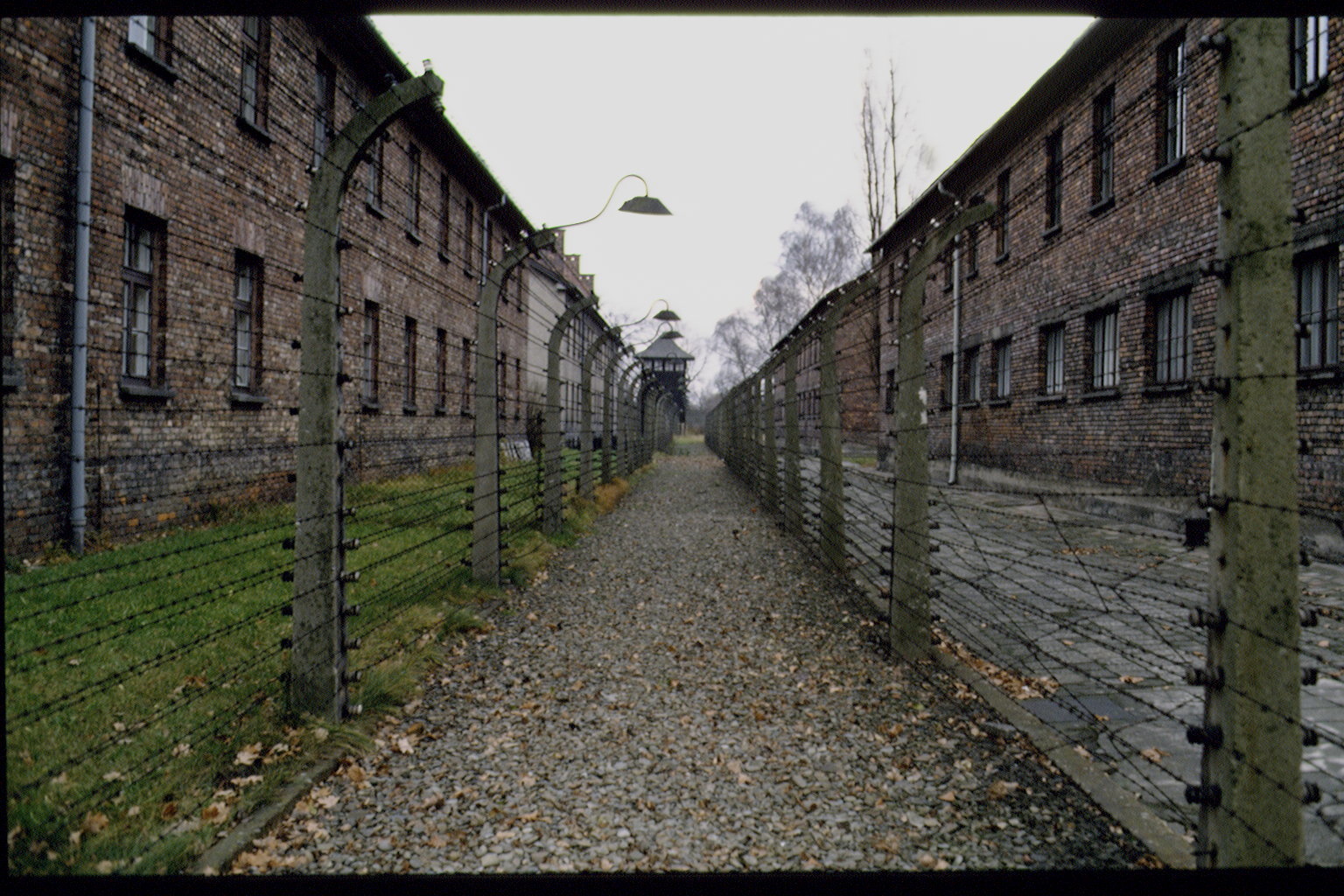
The Auschwitz Memorial is Now Accessible Via Virtual Tours
“There is no way to understand postwar Europe and the world without an in-depth confrontation between our idea of mankind and the remains of Auschwitz,” the Auschwitz-Birkenau Memorial and Museum states.
And while the coronavirus pandemic has forced the memorial to adjust, the Auschwitz Memorial is now accessible to all through a free, online virtual tour .
From a birds-eye view, arrows guide viewers through the hallowed grounds, as well as the “main camp” of Auschwitz I and its larger subcamps Birkenau and Buna. Between the years of 1942 and 1944, more than 40 sub-camps were built around Auschwitz in the Polish suburb of Oswiecim. Over the course of World War II, more than 1.1 million people were murdered within its gates.
According to the memorial’s website, the virtual tour includes “over 200 high-quality panoramic photographs” with “360⁰ images present[ing] the authentic sites and buildings of the former German Nazi concentration and extermination camp.” Locations within each of the camps contain the option for viewers to click for further information, with archival documents, artwork created by the prisoners, online lessons, and witness accounts supplementing the tour.
While it is difficult to capture the sheer breadth and horror of Auschwitz via a computer screen, testimonials from survivors offer a somber lesson at every click.
Viewers can stand in “roll-call square,” which one survivor, Franciszek Jaźwiecki , describes as:
“Each of us is waiting, fearing for his number to be read out, and it is so weird to feel regret taking hold of one’s heart. Finally, the filthy egoistic feeling takes over (…) and (one) is almost glad to hear other numbers than oneself. Those whose numbers were read out distribute their belongings among those standing closest to them, as they shall not need them anymore, and give instructions regarding their relatives. (…) There is no crying, no sobbing as each and every one of us cannot speak a word, because the throat is tight and this feeling just remains… (…).”
The memorial is closed to visitors until December 27, 2020, but due to worldwide travel restrictions, the virtual tour remains the best option for many. And while there is no replacing an in-person visit, the online experience still provides a sobering and necessary education to the horrors of the Holocaust.
Related stories

Portfolio: Images of War as Landscape
Whether they produced battlefield images of the dead or daguerreotype portraits of common soldiers, […]

Jerrie Mock: Record-Breaking American Female Pilot
In 1964 an Ohio woman took up the challenge that had led to Amelia Earhart’s disappearance.

Celebrating the Legacy of the Office of Strategic Services 82 Years On
From the OSS to the CIA, how Wild Bill Donovan shaped the American intelligence community.

During the War Years, Posters From the American Homefront Told You What to Do — And What Not to Do
If you needed some motivation during the war years, there was probably a poster for that.

Search the Holocaust Encyclopedia
- Animated Map
- Discussion Question
- Media Essay
- Oral History
- Timeline Event
- Clear Selections
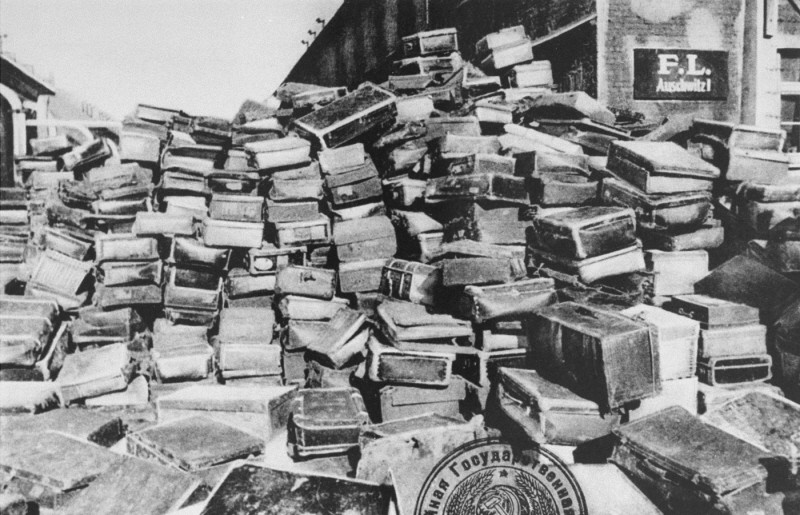
Concentration Camps, 1942–45
December 1941 saw both defeat of the German army in its attempt to take Moscow and the entry of the United States into World War II. It became clear to German authorities that Germany would have to fight a long war.
Facing growing labor shortages and the ongoing need to produce armaments, machinery, airplanes, and ships to replace German losses, the SS established more SS-owned firms. It also signed contracts with state and private firms to produce goods and provide labor for the German armaments and related industries. A famous example of cooperation between the SS and private industry was the I.G. Farben company's establishment of a synthetic rubber plant in 1942 at Auschwitz III (Monowitz).
Serving the German War Effort
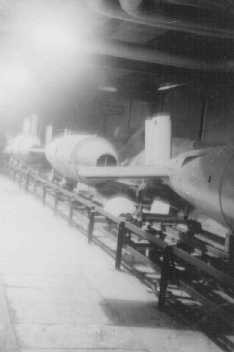
Assembly line where prisoners were forced to manufacture V-bombs at the Dora-Mittelbau concentration camp, near Nordhausen. Germany, April-May 1945.
- US Holocaust Memorial Museum
The incarceration of increasing numbers of people in the concentration camps assured the quantity of the labor supply even as the brutality of life inside the camps depleted the number of available laborers. The SS used gas chambers and other means to "weed out" prisoners who were no longer able to work.
During 1942–1944, hundreds of subcamps were established for each concentration camp. Subcamps were located in or near factories or sites for the extraction of raw materials. For example,
- Wiener Neudorf, a subcamp of Mauthausen established in 1943, was located near an airplane factory on the east side of Vienna, Austria
- Sosnowitz was established in the vicinity of a coal mine as a subcamp of Auschwitz III/Monowitz
- prisoners incarcerated at Dora-Mittelbau worked under brutal conditions in underground factories for the production of rockets
Central SS authorities tried to persuade camp commandants to focus their efforts on keeping the prisoners alive to serve the German war effort. However, few of the commandants took these instructions seriously. None were concerned about changing the murderous culture of the camps.
Evacuations and Medical Experiments
During the last year of the war, as the Germans retreated into the Reich itself, the concentration camp population (Jewish and non-Jewish) suffered catastrophic losses due to starvation, exposure, disease, and mistreatment. In addition, the SS forcibly evacuated concentration camp prisoners as the front approached because the Nazis did not want the prisoners to be liberated. Under SS guard, prisoners had to march on foot during brutal winter weather without adequate food, shelter, or clothing. SS guards had orders to shoot those who could not keep up. Other prisoners were evacuated by open freight car in the dead of winter.
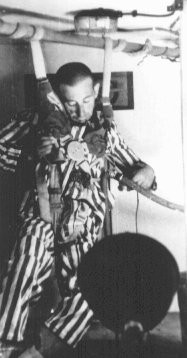
A prisoner in a compression chamber loses consciousness before dying during a medical experiment simulating high altitudes. Dachau Concentration Camp, Germany, 1942.
- National Archives and Records Administration, College Park, MD
During this period, the concentration camps were also sites of hideous and perverted medical experiments conducted on prisoners against their will and often with lethal results. For example, in Dachau, German scientists experimented on prisoners to determine the length of time German air force personnel might survive under reduced air pressure or in frozen water. In Sachsenhausen, various experiments were conducted on prisoners to find vaccines for lethal contagious diseases. At Auschwitz III, the SS doctor Josef Mengele conducted experiments on twins to seek ways of increasing the German population by breeding families that would produce twins.
These experiments were criminal and murderous. They were also based for the most part on bogus science and racist fantasy.
In 1944–1945, the Allied armies liberated the concentration camps. Tragically, deaths in the camps continued for several weeks after liberation. Some prisoners had already become too weak to survive.
According to SS reports, there were more than 700,000 prisoners left in the camps in January 1945. It has been estimated that nearly half of the total number of concentration camp deaths between 1933 and 1945 occurred during the last year of the war.

African American soldiers of the US Army escort German civilians through a site where camp prisoners were massacred during a death march from Buchenwald . Such tours forced Germans to recognize the crimes committed by the SS. Near Nammering, Germany, 1945.
Critical Thinking Questions
- Where were the camps located? To what degree was the German population aware of the camps, their purpose, and the conditions within? How would you begin to research this question?
- Did the outside world have any knowledge about these camps? If so, what actions were taken by other countries and their officials? What choices did other countries have in the face of mistreatment of civilians?
- How and why did the function of the concentration camp system change in the middle of World War II?
- How do these camps differ from relocation or transit camps in other national histories? How are they similar to camps in other national histories?
- Explain the systematic nature of the attempt to annihilate the Jews of Europe. What kind of a society or government may be necessary for a systematic effort such as this?
Thank you for supporting our work
We would like to thank Crown Family Philanthropies, Abe and Ida Cooper Foundation, the Claims Conference, EVZ, and BMF for supporting the ongoing work to create content and resources for the Holocaust Encyclopedia. View the list of all donors .
Rated 98% based on 1029 reviews

UK 0345 475 1815 USA (toll free) 877‑209‑5620 International 00 44 345 475 1815 [email protected] Rated 98% on feefo
Sign-in Latest News Subscribe Request Brochure
- Future Planning
- Military History and Battlefield Tours
- Classical History and Archaeological Tours
- Holocaust Tours
- General History Tours
- Experience Tours
- Walking Tours
- Early Periods
- 17th & 18th Century
- Victorian Era
- First World War
- Second World War
- Cross-Periods
- Destinations
- Our Expert Historians
- Historians Q&A
- Historical Tailor Made Tours
- School Tours
- Battlefield Studies
- Testimonials
- What to Expect
- Activity Levels
- Tour Diaries & Images
- Our Library
- Frequently Asked Questions
- Work For TCE
- General Booking Conditions
- Download Booking Form
- Tours by Date
- Tours by Theme
- Tours by Period
- Tours by Destination
- Latest News
- Request Brochure
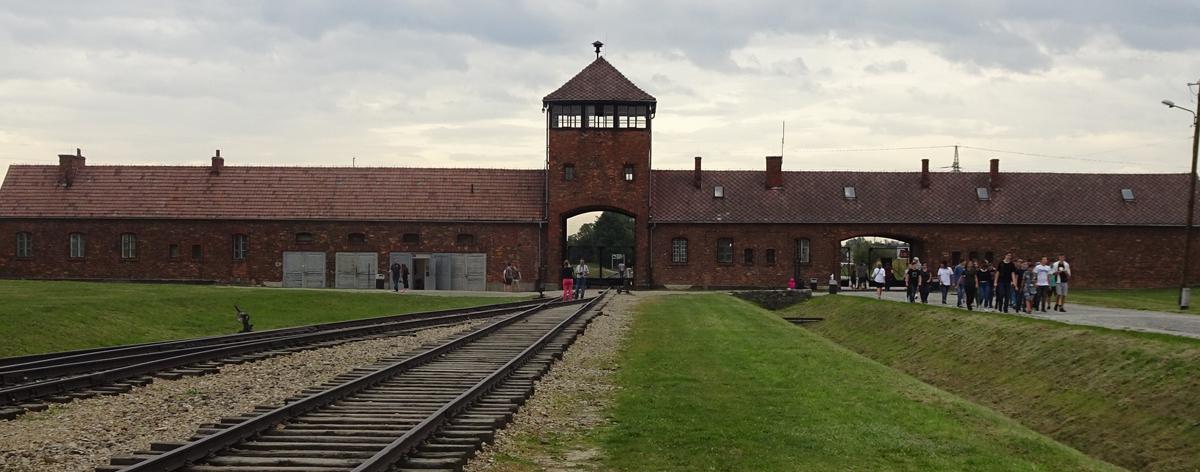
- The Holocaust
Poland and the Nazi Death Camps
Experience Tours General History Tours Holocaust Tours
2nd - 9th October 2024 (8 Days)
Expert Historian : Martin Winstone
Tour price: £3,195
Sold out - use the button below to be put on the waiting list
click here to register
MORE DATES AVAILABLE BELOW
Your Holiday Essentials
2nd - 9th October 2024 (8 Days)
4-star hotels, meals as indicated,
drinks with dinner, all entrance
fees, tour manager and expert
historian throughout, all internal
travel, optional travel from UK.
Activity Level : 2
Standard price: £2,945
Incl. travel from UK: £3,195 Room sole occupancy supplement: £325 Non-refundable deposit: £625
Use the button below to be put on the waiting list
click here to register your interest
Interested in this tour but not ready to book? Register your interest using the link below and we will keep you updated on the progress of the tour.
23rd - 30th April 2025 (8 Days)
Expert Historian : Dr Isabel Wollaston
Booking open
click here to book
24th June - 1st July 2025 (8 Days)
Standard price: £3,015
Incl. travel from UK: £3,295 Room sole occupancy supplement: £350 Non-refundable deposit: £650
22nd - 29th July 2025 (8 Days)
2nd - 9th September 2025 (8 Days)
Expert Historian : Professor Tim Cole
Tour Introduction
In this 8-day tour to Poland, we visit the sites of the former ghettos in Warsaw, Lublin and Krakow alongside four of the concentration and death camps - Treblinka, Majdanek, Belzec and Auschwitz-Birkenau - that played such a significant role in this genocide. We look at the struggle of both the Jews and the Poles against their oppressors,visiting the scenes of the Ghetto Uprising in 1943 and the memorial to the Warsaw Rising in 1944. You will see the shift from complete physical destruction of ghetto and camp to the actual remnants due to the rapid advance of the Soviets. However, the tour is not limited to the serious and emotive history of the Holocaust, with its clear message for future generations. We also enjoy expert guided tours of the historic cities of Warsaw and Krakow. We sample much of the local culture and visit the world famous salt mine at Wieliczka. Each evening we will dine in a different local restaurant to enjoy a wealth of diverse local cuisine. The topography of the sites we visit involves a fair amount of walking: at Auschwitz/Birkenau you will cover almost 8 miles over the course of the day, but that is necessary to achieve a full appreciation of the subject.
Read reviews of this tour by past travellers
Under Communism, in Poland it was traditional to refer to ‘six million Poles murdered during World War II, a figure that referred to 3 million ethnic Poles and 3 million Polish Jews. Those Polish Jews were murdered in ghettos, forests in the east of the country, or purpose-built death camps set up after the German occupation of Poland. By far the largest of these was Auschwitz-Birkenau, which was the site of over one million deaths, mainly Jews brought here from all over Europe. The smaller, purpose built 'killing' camp of Treblinka, where Warsaw's Jews were taken, was said by its commandant SS-Obersturmfuhrer Franz Stangl to be able to murder over 1000 people per hour at its peak. With the positioning of the Majdanek camp on the outskirts of Lublin, the Germans made no effort to disguise the killings, its gas chambers and crematorium being plainly visible to passers-by. The overarching narrative of the tour is about the shift from Polish Jews to European Jews and the evolution of policy from concentration camps to death camps.
- With Dr Isabel Wollaston , Prof Alexander Korb or Martin Winstone
- See parts of ghetto walls in Warsaw
- The POLIN Museum of the History of Polish Jews
- Treblinka memorial and museum
- The multi-purpose prisoner of war camp, concentration camp and death camp at Majdanek, on the outskirts of Lublin
- Belzec camp and museum
- Guided tour of the architectural wealth of Krakow's Old Town, and former Jewish quarter in Kazimierz, now a major cultural and heritage site (and which featured heavily in Steven Spielberg’s film Schindler’s List.
- Full day at Auschwitz and Birkenau
- Visit the awesome 700 year old salt mine at Wieliczka
What's Included
- Return flights from London (optional)
- 4 Star Hotels
- Buffet breakfast each morning
- A three-course dinner party on 6 evenings hosted by your expert historian and tour manager
- Two drinks i,e wine or beer at each dinner and a welcome drink on first evening
- Dedicated Tour Manager
- Entrance fees for sites included in itinerary
- Modern, comfortable, air-conditioned coach
- Tour information booklet
- Access to the Cultural Experience app
- Helpful and friendly travel advice
- The company of like-minded travelers
"All in all an incredibly enriching and moving experience, I am so glad I went with The Cultural Experience. With the guides vast expertise brought everything to life. Examining events in chronological order was an amazing way to learn".
"One doesnt need to be an expert hiker for this tour, but you need a lot of stamina there is a lot of walking and standing, often for hours, with nowhere to sit down and rest...this was an amazing once in a lifetime experience...I thought I understood the Holocaust, but I had only superficial knowledge. I have learned so much."
Day 1 - Depart
Fly from London to Warsaw before checking in to our central hotel for two nights (or make your own arrangements to join the tour at the hotel). (D)
Day 2 - Warsaw
A busy day exploring the Polish capital on foot to explore the key sites associated with the former ghetto and its subsequent uprising: the POLIN Museum of the History of Polish Jews, the Umschlagplatz (a holding area set up by Nazi Germany) and the Warsaw Jewish cemetery, one of the largest Jewish cemeteries in the world.(B,D)
Day 3 - Treblinka & Lublin
This morning we drive to the extermination camps at Treblinka, where between 700,000 to 900,000 Jews lost their lives. Operational between July 1943 and October 1943, more Jews lost their lives at Treblinka II than at any other death camp, other than Auschwitz. Spend time in the small but informative museum before visiting the memorials to those who lost their lives. We spend the night in Lublin, a city which had a large pre-war Jewish population and which served as the administration centre for Action Reinhardt. (B,D)
Day 4 - Belzec & Majdanek
Our day will begin at the concentration camp of Majdanek, just on the outskirts of Lublin, where approximately 80,000 people from 28 different countries lost their lives. Today it is a well-preserved Nazi concentration and death camp where we find barracks, guard towers, gas chambers, crematoria, museum, “Gates of Hell” memorial and the mausoleum memorial, a gigantic structure which contains the ashes of victims beneath it. Continue to Belzec, the small but lethal death camp, where between 430,000 & 500,000 Jews lost their lives in six-months with as a few as 7 people surviving. Our hotel for the evening is based in Rzeszów. (B,D)
Day 5 - Krakow
This morning we drive to Krakow where we take a change of pace and emphasis with an afternoon orientation tour of Krakow's Old Town and its busy street life. Check-in to our hotel for three nights.(B,D)
Day 6 - Auschwitz and Birkenau
An early start as we are immersed in a comprehensive tour on foot of the concentration and death camps of Auschwitz and Birkenau. To enter the camp of Auschwitz, one passes under the infamous inscription 'Arbeit Macht Frei' mounted upon its main gate, before visiting the exhibitions in the surviving prison blocks. In the afternoon we visit Birkenau, also known as Auschwitz II, the purpose-built camp that had hundreds of barracks and 4 massive gas chambers and functioned as the epicentre of the Holocaust during 1943 and 1944. The day at Auschwitz and Birkenau explores two large camps and will involve a good amount of walking. This evening you are free to find your own restaurant for dinner and perhaps explore Krakow. (B)
Day 7 - Kazimierz and Wieliczka
Before WW2, some 70,000 Jews lived in Krakow, mostly in the suburb of Kazimierz. We explore this tiny area including the Old Synagogue Museum and there will be an opportunity for an optional unaccompanied visit to the museum situated in the former Oscar Schindler's Factory. We visit the awesome 700-year-old salt mine at Wieliczka, its labyrinth of 300km of tunnels revealing chapels, underground lakes and a museum. (B,D)
Day 8 - Home
Transfer to Warsaw airport for your return flight to Londonor perhaps extend your stay in Poland. (B)
Recommended Reading List
- Auschwitz : The Nazis & The 'Final Solution'
- Holocaust Landscapes
- Marching into Darkness: The Wehrmacht and the Holocaust in Belarus
- Ordinary Men
- Survival in Auschwitz: The Nazi Assault on Humanity
- Traces of the Holocaust: Journeying In and Out of the Ghettos

Martin Winstone
Martin Winstone is Senior Historical Advisor to the Holocaust Educational Trust and Project Historian for the UK Holocaust Memorial, which is currently in development in London. He is an expert on the history of the Holocaust in Poland as well as on the history and nature of Holocaust sites across Europe. His first book, The Holocaust Sites of Europe (first published 2010; third edition, 2024), is a comprehensive guide to Holocaust-related sites, including camps, mass shooting sites and ghettos. He is also the author of The Dark Heart of Hitler’s Europe (2014), a history of the General Government, the region of German-occupied Poland which was the central killing ground of the Holocaust. Martin has frequently appeared as a commentator on the Holocaust on television and radio and in the press.
Photo Gallery
- SS Canteen, Auschwitz I
- Isabel guiding the group at Majdanek
- Warsaw Uprising Monument
- Group picture inside Wieliczka Salt Mine
- Auschwitz Train
- Anne & Margot Frank Memorial
Tour Reviews
Take a look at some independent reviews of this tour by previous participants here
Take a look at some of the images taken on our most recent tour
View a diary of our Holocaust tour here
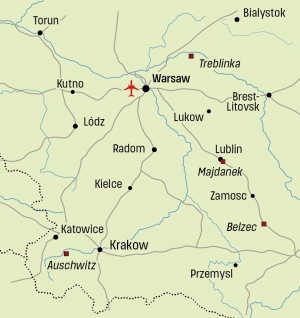
direct link
Subscribe to Our E-Newsletter
For up to date news as well as details about all of our tours please subscribe to our fortnightly e-newsletter

Quick Links
Military History and Battlefield Tours Classical History and Archaeological Tours Holocaust Tours General History Tours Experience Tours Walking Tours Future Planning Request Brochure Site Map
The Cultural Experience 11B Mansfield Park Four Marks Alton GU34 5PZ United Kingdom
UK: 0345 475 1815 USA (toll free): 877 209 5620 International: 00 44 345 475 1815
© 2015 - 2024 Midas Tours Ltd - Hosted by SWD - Legal Info - Terms of Use - Privacy Policy / Cookies - Sign-in
D iscover Society
Measured – factual – critical.
- Covid-19 Chronicles
- Policy & Politics
Are mandatory visits to concentration camp memorials the answer?
- By discoversociety
- March 06, 2018
- 2018 , Articles , DS54
Doreen Pastor
In response to an anti-Semitic attack in Berlin , Sawsan Chebli, State Secretary for Federal Affairs in the state of Berlin, suggested that visits to concentration camp memorials should be made compulsory in Germany. This suggestion is not only aimed at German school children, but also at new migrants as part of the integration process with the intention of fostering a better understanding of German culture and politics. This sparked hefty criticism in Germany, not least from the memorials themselves. Günter Morsch , head of Brandenburgische Gedenkstätten , which includes the sites of Sachsenhausen and Ravensbrück, rejects what he calls ‘forced pedagogy’. The experiences in the GDR (German Democratic Republic), where visits to a concentration camp memorial were compulsory as part of the ‘coming of age’ programme Jugendweihe , have shown that these visits were counterproductive. The press officer of Buchenwald concentration camp memorial agrees and comments “that voluntary visits lead to a greater engagement with the site”. Currently, the federal state of Bavaria is the only state with mandatory visits to concentration camp memorials, all other states regard it as voluntary activity. Berlin itself recommends a visit to a site which commemorates the fascist past, not necessarily a concentration camp memorial, and it is the school’s discretion to implement such a visit.
The comments from the memorial sites do however not address the core argument which underpins such proposals: the fundamental belief that a visit to a concentration camp memorial is a life changing experience educating future generations to be responsible citizens. The idea that a visit to a memorial site can convert young people with extremist views is not supported by educational staff at memorials (Pampel 2011 ) . There are currently no studies which would endorse these assumptions as it would require research pre- and post-visit in addition to visitors vs non-visitors, an extremely time-consuming task. Various studies of school visits to concentration camp memorials, the most prominent one by Dr Herbert Hötte at Neuengamme, have shown that pupils often expect historical authenticity and a genuine presentation of the living conditions (Hötte 1982). The response from a 16-year-old pupil during a visit to Buchenwald is representative of so many school visits:
I thought there were barracks here, one could enter those and it might even still stink there. And there would be stuff lying around, which belonged to the prisoners (Fischer, Hubert 1992).
This pupil would have been gravely disappointed as Buchenwald no longer features barracks. During my fieldwork with individual visitors at the memorial sites Flossenbürg and Ravensbrück, I was confronted with similar recurrent sentiments. Flossenbürg, located in North Bavaria, opened its first permanent exhibition in 2010. It is estimated that 100,000 prisoners were at Flossenbürg and its sub camps, of which 30,000 did not survive. Ravensbrück was the location of the largest women’s camp on German soil. Located to the north of Berlin, it imprisoned approx. 130,000 women from across Europe including an estimated 880 children.
Although exhibitions at both sites document extensively the atrocities committed, the visit often remained an underwhelming experience. Visitors at Flossenbürg were frequently in disbelief that the barracks were destroyed in favour of a new housing development, where local people continued to live their lives with typical amenities such as a supermarket. The site itself resembled a parkland and was considered to be too picturesque. Equally, Ravensbrück with its lakeside setting was not ‘grim enough’. Even though visitors recognised the scale of the atrocities, more often they concluded that “Auschwitz was much worse”. The reasons for Auschwitz-Birkenau’s perceived greater darkness were the “barbed wire fences one is immediately confronted with” or “the shoes people walked in”. A couple I accompanied in Flossenbürg summarised it as follows: “At Auschwitz, I felt sick but here I quite happily go to the café”.
‘The banality of evil’, as Hannah Arendt called it in her report on the Eichmann trial, has spilled over from the court room to the memorial sites (Arendt 1963). Auschwitz-Birkenau now stands for the epitome of the Holocaust and the German memorials cannot live up to the scale of violence which occurred there. Flossenbürg is acutely aware of this challenge and the management team confirmed that the ‘popularity’ of Auschwitz-Birkenau has affected them for years, increasingly also impacting on the larger sites such as Buchenwald and Sachsenhausen. For visitors, the absence of Holocaust icons such as the Arbeit macht frei gate, gas chambers or glass cases with hair influence the aura of a site. They do not visit a memorial site for the historical facts – ‘reading fatigue’ was a quick outcome at Ravensbrück – they want ‘an experience’. At the Dutch memorial site Westerbork , an attempt to incorporate the wish for an experience has led to the creation of an ‘immersive app’ in order to compensate for the lack of authentic structures. Nonetheless, the most frequent question “Where is the gas chamber?” will probably remain.
One could assert that the universal recognition of Auschwitz-Birkenau as the centre of the Holocaust has been successful and therefore we achieved the aim of a collective remembrance of the worst genocide in human history. This is certainly true, yet I would argue that this collective remembrance is focused on key images which have been circulated as evidence for the atrocities committed. When visitors refer to the Arbeit macht frei gate, the barracks or the hair in glass cases, they seek validity for their preconceived beliefs. This does however not necessarily mean that they engage with the wider context of the site. Dr Hötte’s studies had made these difficulties already visible in 1982, and it seems, the situation has worsened. Indeed, my research has revealed that the overpowering image of Auschwitz-Birkenau looms large over the perceived lack of historical authenticity at the German sites. At Flossenbürg an American visitor typically declared when asked whether he was planning to visit any other memorials: “Auschwitz-Birkenau – it is the biggest and everybody knows it.” The Deutsche Welle Journalist Felix Steiner emphasised that “the raison d’etre for Germany’s culture of remembrance in its present form will cease to exist” and “more complex strategies are needed”. In a post-witness era, where people are saturated with daily media portrayals of violence, a repetitive exhibition purely based on scientific facts, as so often the case in Germany, will not be the answer to combat anti-Semitism or other hate-related attitudes.
Hence, the question we need to ask is not whether visits should be compulsory, but rather how do we make visits to memorial sites meaningful for future generations without crossing ethical boundaries? For the manager at the Holocaust memorial in Berlin, large queues at the entrance of the Ort der Informationen (the underground exhibition of the Holocaust memorial) is a sign of an uninterrupted interest in the history of the Holocaust. He does not believe in a discrepancy between the rising visitor numbers and the right-wing populist party AfD (Alternative für Deutschland) gaining seats in the German parliament. Soaring visitor numbers alone however cannot be a measure of success.
Bibliography Arendt, Hannah (1963) Eichmann in Jerusalem: A Report on the Banality of Evil . New York: Viking Press. Fischer, C., Hubert, A. (1992) Auswirkungen der Besuche von Gedenkstätten auf Schülerinnen und Schüler. Breitenau-Hadamar-Buchenwald. Bericht über 40 Explorationen in Hessen und Thüringen. In: B. Pampel (2007) “Mit eigenen Augen sehen, wozu der Mensch fähig ist”: Zur Wirkung von Gedenkstätten auf ihre Besucher . Frankfurt am Main: Campus Verlag. Hötte, H. (1982) Aktualisierte Geschichte. Über die Arbeit mit Jugendlichen im Dokumentenhaus KZ Neuengamme. Argumente zur museumspädogischen Praxis 1(1), 2-16. Pampel, B. (2007) “Mit eigenen Augen sehen, wozu der Mensch fähig ist”: Zur Wirkung von Gedenkstätten auf ihre Besucher . Frankfurt am Main: Campus Verlag.
Doreen Pastor is a PhD candidate in German Studies at the University of Bristol. She researches the politics of memorialisation in Germany and in particular the visitor’s response to exhibitions. She has conducted fieldwork at Flossenbürg concentration camp memorial, Ravensbrück concentration camp memorial, House of the Wannsee Conference Berlin and Bautzen II Stasi prison memorial.
Share this:
The opinions expressed in the items published here are those of the authors and not Discover Society.
- Editorial Board
- Author Index
- Topic Index
Stiftung Brandenburgische Gedenkstätten Gedenkstätte und Museum Sachsenhausen
1945 - Soviet Special Camp Sachsenhausen
Virtual anniversary.
In the evening of 16 August 1945 over 5,000 inmates had reached the barracks of the former concentration camp Sachsenhausen, weakened by their imprisonment and having had to walk over 40 km. This happened in the course of the transfer of the Soviet Special Camp No. 7 from Weesow (near Werneuchen) to Sachsenhausen. From the early 1990s on, the anniversary of the first inmates’ arrival at Sachsenhausen has been honoured by former prisoners and their relatives as a remembrance day for the victims of the special camp.
Up until the closure of the camp, which took place in springtime 1950, NKVD, the Soviet secret service, had interned approx. 60,000 people at Sachsenhausen Special Camp. 12,000 of these died of hunger and disease. For the large part, it was the lower-rank functionaries of the National-Socialist regime interned at the camp, but also staff of the administrative offices, police, judiciary and economic sector, as well as SS staff from concentration camps. Also among the prisoners were those who became politically undesirable and those who were arbitrarily arrested, as well as people convicted by Soviet Military Tribunals: men and women, old and young, those with a National-Socialist past and those without.
For many years, Sachsenhausen Memorial has been marking this day by conducting joint memorial events together with the Working Group Sachsenhausen 1945-1950. This year, a conference on how to deal with the topic of special camps in future, was planned. However, it had to be cancelled due to the Covid-19 pandemic. Sachsenhausen Memorial has developed a commemorative online program thanks to the financial support both of the Federal Foundation for the Reappraisal of the SED Dictatorship, and the Commissioner for the Reappraisal of the Consequences of the Communist Dictatorship for the Federal State of Brandenburg.
Memorial Event Soviet Special Camp Sachsenhausen
Virtual tours, the soviet special camp no. 7/no. 1 in sachsenhausen.
Sjoma Liederwald provides an insight into the history of the Soviet Special Camp No. 7/No. 1, where 60,000 people were imprisoned, 12,000 of whom died. He explains the different groups that were imprisoned there by the Soviet secret service after the occupation of Germany. Liederwald also tells of the liquidation of the camp in 1950, when 4,800 convicts were handed over to the GDR for imprisonment, and more than 700 people who had been imprisoned until then without a verdict were handed over for sentencing in the unlawful "Waldheim Trials", in which some received the death penalty.
Please active the english subtitles!
The "Soviet Special Camp No. 7/No. 1 in Sachsenhausen" Museum
The "Soviet Special Camp" museum is located at the northern tip of the former camp triangle. From the museum's location, views point to the largest mass grave of the special camp on the "Cemetery by the Kommandantenhof" and to 15 stone barracks, two of which visitors can walk through. Enrico Heitzer introduces the museum, which presents the history of the special camp on more than 350 square metres of exhibition space with 700 exhibits.
Mass graves: The dead of the Soviet Special Camp in Sachsenhausen
Enrico Heitzer talks about the graves of the Soviet Special Camp No. 7/No. 1 in Sachsenhausen. In this camp, which was initially located briefly in Weesow, the Sovieet secret service imprisoned about 60,000 people from 1945 to 1950. It was thus the largest of a total of 10 special camps that existed in the Soviet occupation zone and early GDR. About 12,000 people died from the inhumane prison conditions. Dying and death are central aspects of the history of this camp, which have been researched, documented and remembered at the Memorial for years.
Contemporary witnesses
Film: "everything to survive: young prisoner at the soviet special camp sachsenhausen" (2017).
In the school year of 2016/2017, Sachsenhausen Memorial collaborated with Waidak Media e.V. and Georg Mendheim Oberstufenzentrum School, Oranienburg, to make a film. The film focuses on Reinhard Wolff, who as a young man was imprisoned for three years in the Soviet Special Camp in Sachsenhausen.
Reinhard Wolff, the 88 years old man portrayed in the film, had been wrongly imprisoned in the Soviet Special Camp No. 7 in Sachsenhausen from 1945 to 1948, as an alleged underground fighter of the National Socialist “Werwolfs“. He remains active in remembrance work focusing on the post-war Soviet camps. Throughout the whole school year, 18 students from the history course created a cinematic portrait of an eyewitness, using the advice of Sachsenhausen Memorial and working under the guidance of the filmmaker and Grimme award winner Loretta Walz and her colleague Knut Gerwers, and memorial teacher Uwe Graf. The film documents both the life and work of Reinhard Wolff as well as how these young people dealt with the topic of special camps.
Interview with Leonore Bellotti
Leonore Fink was born on 26.06.1925 in Königsberg. Her father, Karl Fink, was a gynaecologist and held a position as a professor at the University of Königsberg. Shortly before the end of the war, Leonore Fink fled the city and went to Mecklenburg. She had received information about the situation in her city of birth and had described it in clear words in a letter to her friend who was living in the British occupation zone. The letter ended up in the hands of the Soviet secret service, as a result of which she was arrested on 26 June 1946. Two months later, her mother Frieda Fink was also arrested. On 4 October 1946, both women were convicted of ‘Anti-Soviet propaganda and agitation’ and ‘defamation of the Red Army’ by the Soviet Military Tribunal in Schwerin and each sentenced to five years at the Soviet Special Camp in Sachsenhausen. Both women were released in February 1950.
Interview with Friedrich Klausch
Friedrich Klausch, born in Potsdam in 1929, did an apprenticeship as a toolmaker in Mainz-Kastel and Berlin-Spandau from 1943 to 1945. In 1945 he was deployed by the “Volkssturm” and was briefly taken prisoner by the Soviets, where he escaped. In 1948, he was a metal worker in Marl-Hüls/Ruhrgebiet. On 6 April 1948, he was arrested by the Soviet secret service at the sector border near Potsdam. On 4 September 1948, he was sentenced to 25 years imprisonment by the Special Council of the Ministry for State Security (MGB) in Moscow for alleged espionage. He was held in Leistikowstraße prison in Potsdam until the beginning of October 1948, before he was taken to the Soviet Special Camp in Sachsenhausen. After a few weeks he was sent to the GULag camps in the Soviet Union. He was imprisoned in camps and prisons in Brest-Litovsk, Moscow, Vologda and Inta, among others. On 12 January 1956, he was released via the Friedland camp to the Federal Republic of Germany. He later worked as a mechanical engineer. The Chief Military Prosecutor's Office of the Russian Federation exonerated him on 28 November 1997. The film tells his story.
Artistic Intervention
Dance performance: "barracks and the waltz of the flowers" (2015).
As a part of the 2015 program marking the 70th anniversary of the foundation of the Soviet Special Camp No. 7/No. 1 in Sachsenhausen, a dance performance by Johanne Timm "Barracks and the Waltz of the Flowers – A Choreographic Search for Traces of Grandparents’ Imprisonment" was presented at the memorial site.
Johanne Timm, choreographer and dancer, searched for traces of the imprisonment of her grandparents at the Soviet Special camp in Sachsenhausen. Dietlinde and Tilmann Timm were interned there from 1946 to 1950 and fell in love in the camp theatre.
Voices of International Experts
Dr. irina scherbakowa, memorial moskau, russia.
Dr. Irina Shcherbakova, historian and specialist in German Studies, is one of the founding members of Memorial, a human rights organisation in Moscow. Since the latter days of the Soviet Union, Memorial has been dedicated to the reappraisal of Stalinist crimes and has in its possession large collections of firsthand accounts as well as artefacts from the camps. Irina Shcherbakova is head of the education program at Memorial International. She is editor-in-chief of the web portal "Lessons from History". She was one of the first Russian historians to make a significant contribution to the historical reappraisal of the Soviet special camps in Germany.
https://urokiistorii.ru/node/53877
Andrew Beattie, University New South Wales, Australien
Dr. Andrew Beattie is Associate Professor at the University of New South Wales, where he teaches German and European Studies. He is an expert on the German culture of remembrance and has been focusing his studies on the reappraisal of the National Socialist and GDR past, as well as on the internment practices of the Allies in post-war Germany. His latest book Allied Internment Camps in Occupied Germany: Extrajudicial Detention in the Name of Denazification, 1945–1950 was published in 2019 by Cambridge University Press.
https://www.arts.unsw.edu.au/our-people/andrew-beattie
Dr. Ilya Udovenko, State Museum of the History of the Gulag, Moscow (Russia)
The Gulag Museum in Moscow was founded in 2001 by the former Soviet dissident Anton Antonov-Ovseyenko, who himself had been held prisoner in a camp. The museum in the centre of Moscow focuses on the history of the Gulag utilising different means, one of which is a film studio where interviews with eyewitnesses and online content are produced. Dr. Ilya Udovenko from the Research Department presents the work of the museum, with a special focus on the "Gulagmaps" project – an online maps-based resource, where information and sources on the Soviet special camps in Germany can be found.
http://www.gmig.ru / & https://gulagmap.ru/

Our " Highlighted Object" for this month is a secret message out of the Soviet Special Camp No. 7 in Weesow.
- Sachsenhausen Memorial and Museum
- Ravensbrück Memorial Museum
- Death March Memorial in Below Forest
- Leistikowstrasse Potsdam Memorial
- Memorial to the Victims of Euthanasia Murders
- Brandenburg-Görden Prison Memorial
- Memorial and Museum Lieberose in Jamlitz
Wir verwenden Cookies auf dieser Website. Cookies sind kleine Textdateien, die auf Ihrem Computer gespeichert werden. Sie dienen dazu, unsere Seiten nutzerfreundlicher zu machen und diese optimiert darzustellen. Durch die Nutzung unserer Seiten erklären Sie sich mit dem Einsatz von Cookies einverstanden. Erfahren Sie mehr in unseren Datenschutzbestimmungen
- Share full article

75 Years After Auschwitz Liberation, Worry That ‘Never Again’ Is Not Assured
Amid a surge of anti-Semitism and a rise in dehumanizing political rhetoric, there is fear that the horrific lessons of the death camp are being lost.
Children at the Auschwitz concentration camp in German-occupied Poland after its liberation by the Soviet Army in January 1945. Credit... Polska Agencja Prasowa, via Associated Press
Supported by

By Marc Santora
- Published Jan. 25, 2020 Updated Oct. 6, 2021
AUSCHWITZ-BIRKENAU, Poland — Even before the gas chambers were destroyed and the savage toll of years of industrialized mass murder revealed to the world, prisoners at the largest Nazi concentration camp were already repeating two words: Never again.
But as the 75th anniversary of the liberation of Auschwitz approaches, an occasion being marked by events around the world and culminating in a solemn ceremony at the former death camp on Monday that will include dozens of aging Holocaust survivors, Piotr Cywinski, the director of the Auschwitz-Birkenau State Museum , is worried.
“More and more we seem to be having trouble connecting our historical knowledge with our moral choices today,” he said. “I can imagine a society that understands history very well but does not draw any conclusion from this knowledge.”
In this current political moment, he added, that can be dangerous.
All one has to do is look at the backdrop against which this anniversary is taking place.
Across Europe and in the United States, there is concern about a resurgence of anti-Semitism . Toxic political rhetoric and attacks directed at groups of peoples — using language to dehumanize them — that were once considered taboo have become common across the world’s democracies.
And as the living memory of World War II and the Holocaust fades, the institutions created to guard against a repeat of such bloody conflicts, and such barbarism, are under increasing strain .

With the very notion of the truth and facts under assault in increasingly polarized societies, control over the historical narrative is yet another battlefield .
Even the memory of Auschwitz — where 1.1 million men, women and children, mostly Jews, were murdered — has been weaponized.
As world leaders converged on Israel this past week for a ceremony at Yad Vashem, the hillside Holocaust memorial in Jerusalem, the event was clouded by a bitter dispute between Poland and Russia.
After President Vladimir V. Putin of Russia was offered a speaking role, the president of Poland, Andrzej Duda , pulled out when he was not granted the same privilege.
“Unfortunately, I am sorry to say this, but President Putin consciously, certainly, spreads historical lies and obviously does it with an agenda because he is trying in this way to erase the responsibility of Stalinist Russia for the start of World War II together with Nazi Germany,” Mr. Duda told Israeli state television. “I imagine he is ashamed of it today.”
But far from expressing shame, Mr. Putin and his government have been increasingly aggressive in their efforts to whitewash the historical record concerning the Soviet-German nonaggression pact of 1939 and the subsequent invasion and subjugation of Poland.
“It was them who, while pursuing their mercenary and exorbitantly overgrown ambitions, laid their people, the Polish people, open to attack from Germany’s military machine and, moreover, generally contributed to the beginning of the Second World War,” Mr. Putin has asserted.
While Poland is a deeply divided country when it comes to politics and culture, the outrage over Mr. Putin’s remarks is nearly universal in the country, as is the support for Mr. Duda’s decision to boycott the event at Yad Vashem.
“It’s surreal that a global event dedicated to the memory of the Holocaust victims becomes a political affair, a cover for history trading,” said Shevah Weiss, an Israeli political scientist and former president of Yad Vashem. Born in Poland in 1935, he is a Holocaust survivor and served as an Israeli ambassador to Poland. “The Polish president was right to refuse to attend it,” he added.
But the current Polish government’s stance is complicated by its own efforts to shape history to promote its own brand of aggrieved nationalism.
After the government passed a law that would have made it a crime to accuse Poland of complicity in the Holocaust, which critics said could stifle free speech, the international backlash was swift. Poland ended up backing down but not before undermining years of hard work to build better relations with Israel. It also brought a strong rebuke from American lawmakers, usually steadfast allies.
Pawel Spiewak, the director of the Jewish Historical Institute in Warsaw, said it was all very sad. So many people were “touched by hell” during the war, he said, but instead of finding common ground , political leaders stoke division and risk repeating the mistakes of the past.
“The language and system of values of the new Europe that emerged after the Second World War are being forgotten,” he said. “People don’t want to listen to it. I would say they are even tired of it.”
That makes for a public more susceptible to false and distorted narratives. Which is why Auschwitz itself remains so important.
Unlike many of the concentration camps, where a total of six million Jews were killed over the course of the war, Auschwitz largely escaped destruction.
Last year, more than two million visitors crossed under the same wrought iron gateway as tens of thousands of prisoners once did, looking up at the cruelly ironic words “Arbeit Macht Frei,” or work sets you free.
For most during the war, freedom would never come.
While the two main gas chambers were blown up by the Nazis before they fled, the ruins still testify to their existence. Visitors can see the ovens used to incinerate the remains of those slaughtered.
The train tracks leading into Birkenau, where cattle cars would arrive crammed with Jews who were swiftly herded into the gas chambers, are no longer used but remain a ghastly reminder of the scale, reach and industrialization of the murder apparatus.
Ronald S. Lauder , the cosmetics billionaire and philanthropist, has made it his mission to help preserve the site, helping to raise $110 million to that end.
He said that while historians can speak to events, there was simply no substitute for hearing the stories of real people in a real place made of real brick and mortar.
And this anniversary was special, he said, simply because with the passage of time, there are fewer witnesses left to tell their story.
“Almost half the survivors have died in the last five years,” he said in an interview. “This will be the last time we get people together.”
Zofia Posmysz, a 96-year-old Polish survivor of Auschwitz, will not be able to attend the ceremony but said that she had followed the recent political dispute. Listening to Mr. Putin’s attacks on Poland, she said, “takes me back immediately and keeps me awake at night.”
“I fear that over time, it will become easier to distort history,” she said in her apartment in Warsaw. “I cannot say it will never happen again, because when you look at some leaders of today, those dangerous ambitions, pride and sense of being better than others are still at play. Who knows where they can lead.”
Joanna Berendt contributed reporting from Warsaw, and Andrew Higgins from Moscow.
More about Marc Santora
Around the World With The Times
Our reporters across the globe take you into the field..
Lessons From a Philosopher President: Pepe Mujica, Uruguay’s spartan former president and plain-spoken philosopher, offers wisdom from a rich life as he battles cancer .
Taiwan’s Nightmare, Onscreen: Some think “Zero Day,” a Taiwanese television drama that fictionalizes a Chinese invasion, helps the island confront an increasingly plausible scenario . Others say the show is alarmist.
Beekeepers at the DMZ: The heavily fortified area separating North and South Korea is a place of deep meaning for nearby farmers whose honeybees can fly freely through it .
Scotland’s Wild Boar Problem: Residents say the animals are roaming the roads and hills around Loch Ness , tearing up lawns and terrorizing sheep.
Mennonites in the Amazon: Seeking inexpensive land far from modern life, groups of Mennonites are carving out new colonies in Peru . There are fears they are adding to the deforestation of the jungle.
Advertisement

COMMENTS
Read More. Image Credit: Shutterstock. 5. The Holocaust Memorial - Berlin. The Holocaust Memorial in Berlin is an installation commemorating the genocide of the Jewish people perpetrated under Adolf Hitler and the Nazis. The Memorial is a monument to the six million European Jews who died in the Holocaust.
4. Majdanek Extermination Camp (Poland) In Lublin, Poland, lie the remains of the Majdanek, now a concentration camp memorial. Majdanek is far less visited than the other larger camps like Dachau and Auschwitz, but it has made the list of must-visit Holocaust sites because of how much of the area has been preserved.
Auschwitz 1,2 and 3. Anne Frank's House. The Holocaust Memorial Berlin. Schindler's Factory. Yad Vashem. Warsaw Ghetto. The Holocaust is one of the most unfathomable events in human history. Many say that it can never truly be appreciated or understood until you see some of these sites for yourself. It is also important to further educate ...
A living memorial to the Holocaust, the United States Holocaust Memorial Museum inspires citizens and leaders worldwide to confront hatred, prevent genocide, and promote human dignity. ... Visit the Museum. The Museum is free and open every day except Yom Kippur and Christmas Day.
There are several camps you can visit across the continent that each have their own history and story. Here is a list of the best concentration camps to visit in Europe: 1.Auschwitz I and Auschwitz II-Birkenau. 2. Dachau Concentration Camp Memorial Site. 3. Bergen-Belsen. 4. Sobibor. 5. Treblinka. Top Must-Visit Holocaust And Memorial Sites ...
The Nazi government started the first concentration camp at Dachau, Germany in March of 1933.It has been renovated and preserved as a Holocaust memorial to those who suffered and died there between 1933 and its liberation in 1945. There are several tours from nearby Munich, although you can visit on your own, using public transportation.. The memorial is well-documented in English and you ...
Plaque in the churchyard of the Church of St Michael the Greater, Stamford, Lincolnshire. Holocaust Centre North, at the University of Huddersfield. Hyde Park Holocaust Memorial, Hyde Park, London. Holocaust Exhibition, Imperial War Museum, London. Wiener Library for the Study of the Holocaust and Genocide, London.
Here are 6 of the most significant, where visitors can learn more about the history of the Holocaust. Image Credit: Shutterstock. 1. Sachsenhausen Concentration Camp. Sachsenhausen Concentration Camp was used by the Nazis between 1936 and 1945. Its primary function was for the imprisonment and execution - or extermination - of Jews and ...
This week the world has been commemorating the 75th anniversary of the liberation of the Auschwitz concentration and death camp. In Moscow, the solemn date was observed with the opening of two ...
In the Sachsenhausen Memorial and Museum there are thirteen smaller permanent exhibitions illuminating various aspects of the history of the place. The Memorial is a place of mourning and commemoration while at the same time fulfilling its mission as a modern museum of contemporary history. 1933-1934 Oranienburg Concentration Camp.
Between the years of 1942 and 1944, more than 40 sub-camps were built around Auschwitz in the Polish suburb of Oswiecim. Over the course of World War II, more than 1.1 million people were murdered within its gates. According to the memorial's website, the virtual tour includes "over 200 high-quality panoramic photographs" with "360⁰ ...
Concentration Camps, 1942-45. December 1941 saw both defeat of the German army in its attempt to take Moscow and the entry of the United States into World War II. It became clear to German authorities that Germany would have to fight a long war. Facing growing labor shortages and the ongoing need to produce armaments, machinery, airplanes ...
Discover Auschwitz Concentration Camp in Oswiecim, Poland: The former Nazi concentration camp stands as a museum to remember this dark chapter in European history.
Full description. Experience an in-depth tour of the Concentration Camp Memorial site at Sachsenhausen, one of the main concentration camps of Nazi Germany in the Second World War. Built in 1936 by the SS - the second major camp to be constructed after Dachau - it was set up to detain all opposition to the Nazi regime.
Tour Introduction. In this 8-day tour to Poland, we visit the sites of the former ghettos in Warsaw, Lublin and Krakow alongside four of the concentration and death camps - Treblinka, Majdanek, Belzec and Auschwitz-Birkenau - that played such a significant role in this genocide. We look at the struggle of both the Jews and the Poles against ...
Nazi concentration camps. All of the main camps except Arbeitsdorf, Herzogenbusch, Niederhagen, Kauen, Kaiserwald, and Vaivara (1937 borders). Color-coded by date of establishment as a main camp: blue for 1933-1937, gray for 1938-1939, red for 1940-1941, green for 1942, yellow for 1943-1944. From 1933 to 1945, Nazi Germany operated more ...
The memorial is to honor the Jewish women and children who were held at the Sajmište concentration camp from 1941 to 1942. During that period, some 10,000 Serbs, 7,000 Jews, and at least 60 Roma ...
The experiences in the GDR (German Democratic Republic), where visits to a concentration camp memorial were compulsory as part of the 'coming of age' programme Jugendweihe, have shown that these visits were counterproductive. The press officer of Buchenwald concentration camp memorial agrees and comments "that voluntary visits lead to a ...
For many years, Sachsenhausen Memorial has been marking this day by conducting joint memorial events together with the Working Group Sachsenhausen 1945-1950. This year, a conference on how to deal with the topic of special camps in future, was planned. However, it had to be cancelled due to the Covid-19 pandemic.
Even the memory of Auschwitz — where 1.1 million men, women and children, mostly Jews, were murdered — has been weaponized. As world leaders converged on Israel this past week for a ceremony ...
Friday is the 78th anniversary of the liberation of the Auschwitz-Birkenau death camp built by Nazi Germany in occupied Poland — a date that has become Holocaust Memorial Day.